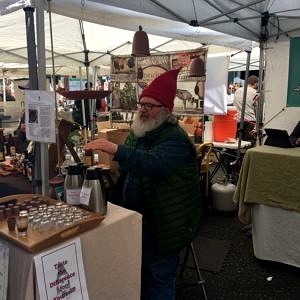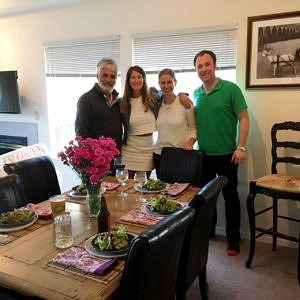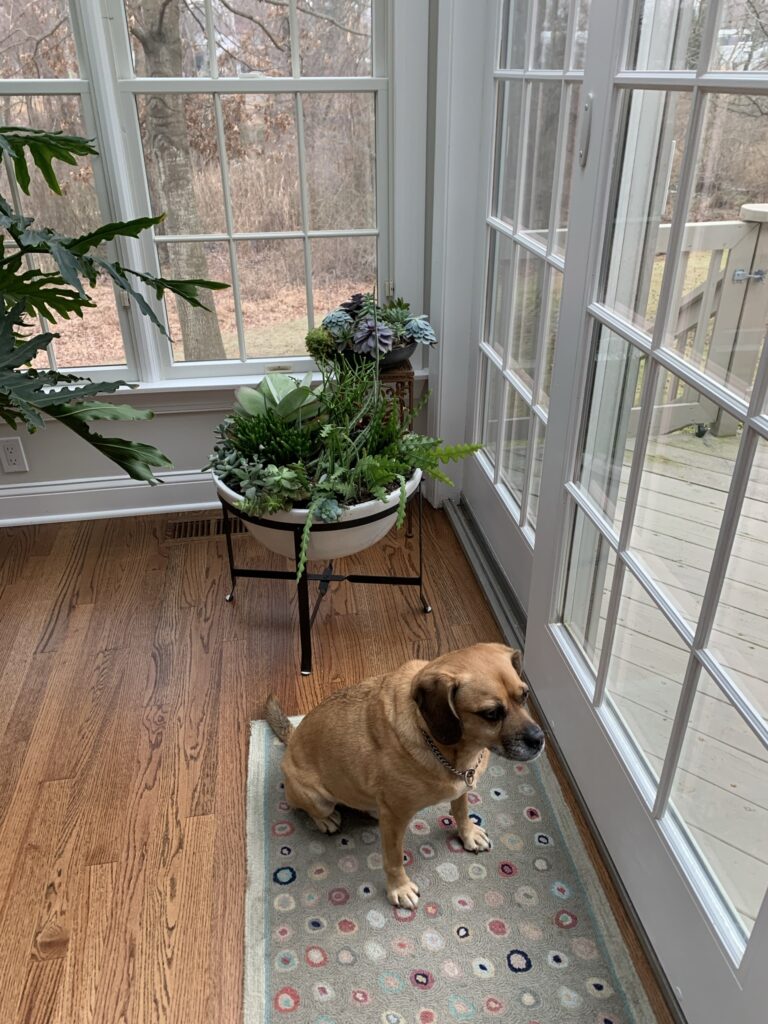
It’s tempting to hold this post until March, but seriously why should the Irish get to have all the green, all the time? If you are a British Cottage aficionado then you know I skew blue, but that doesn’t mean I don’t love the color green. And, in fact, nothing looks better than blue with a pop of green. But I digress.
Early last year, a long time chum arrived at the store and announced that after–I dare not say how many years–of living in Rumson she was ready to ditch the whole house and yard thing and move to a townhome. Fortunately for her, she didn’t need to look farther than her own backyard, so to speak.
In the early 1990s, the Sickles family sold their Little Silver farm to a developer, striking a deal with the town that seemed to make everyone happy. Instead of a scrum of sprawling McMansions the developer would build a thoughtful, planned community, the town would acquire a much-needed park, playing fields, and some green acres and the Sickles family could not only keep their farmer’s market but expand it.
Hence Alderbrook was born, a community of 167 two and three-bedroom, ranch and townhouse style condominiums. That looked fabulous from the get-go because, instead of grouping them on part of the land the developer cut 12 cul-de-sacs through the fields, each with an average of 10 homes, that extend to the woodlands framing the property, and wind around an interior green space.
The Alderbrook offers four models, ranging from 2000 to 3000 square feet, and because the development was geared to empty nesters, features master bedrooms on the first floor. Even better, all the homes have a two-car garage and a basement, which I’m not seeing in many townhome communities. Toss in a few Alderbrook amenities like the on-site pool, a tennis court, and a recreational facility and clearly, this is a win.
The only downside is, if you manage to get your hands on one, they tend to be a bit dated…I mean they were built over thirty years ago, and the nineties were, well the nineties; how do they look now? I’ll cut to the chase and tell you the answer is pretty darn good, but a little elbow grease is required. Let’s start with the kitchen.
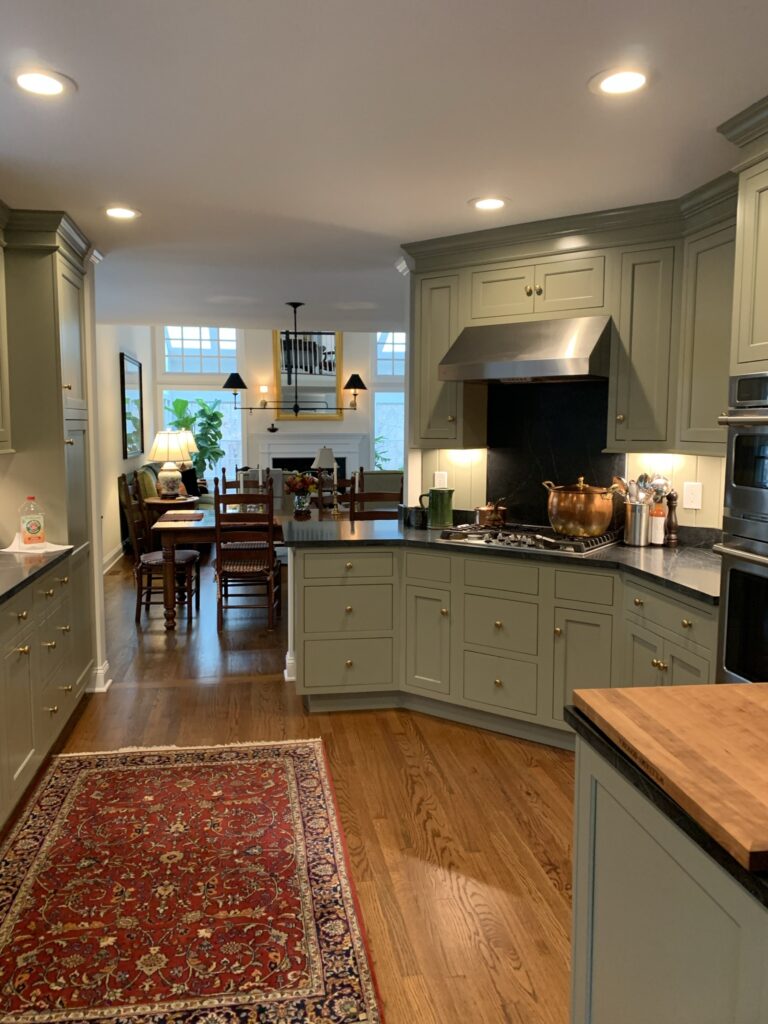
I’m not going to do a before and after because that takes way too long. Suffice it to say the new owners completely gutted the kitchen, removing an oversized island and most of the walls in the dining room. Karen Barnes, at Millhurst Mills, was the mastermind behind the kitchen design and gets credit for the peninsula to the left of the stove.
The color, remember I started off saying this blog was about the color green, was all up to the wife, who over the years had been collecting thoughts about remodeling and interior home design. She was looking forward to creating a space that not only worked perfectly for her and her fellow nester but also for their children and grandchildren.
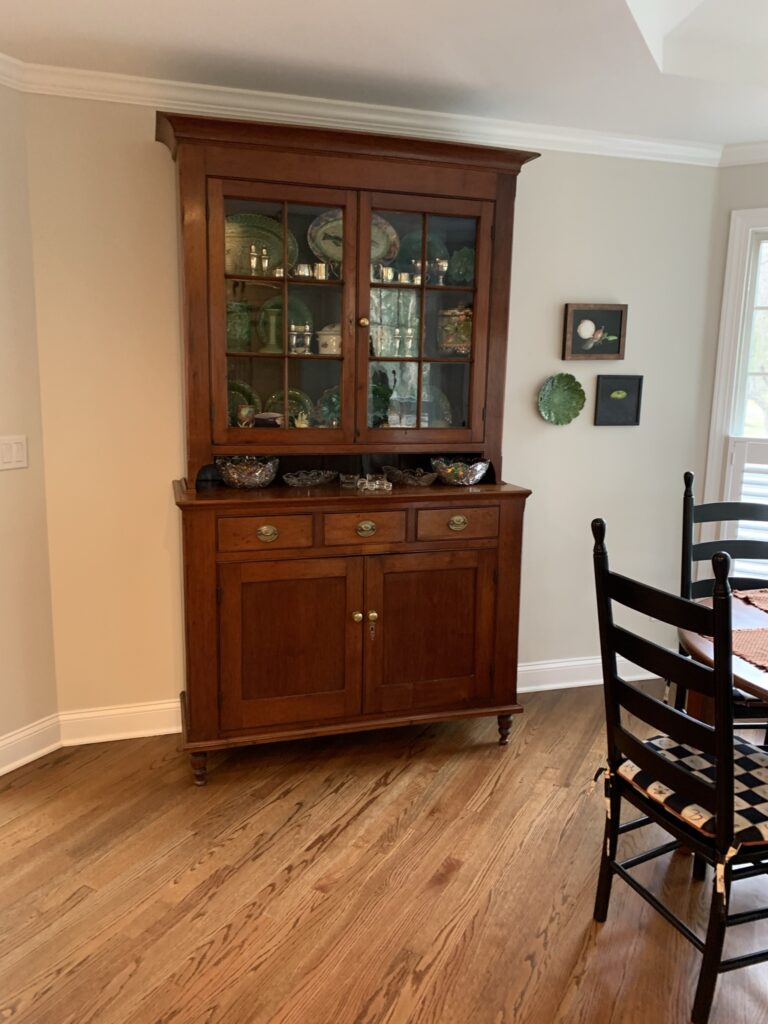
Part of the problem when it comes to empty nesting, which, around here at least, invariably involves downsizing, is what do you do with all your stuff? Especially stuff like early American brown wood antiques when all your kids and everybody else’s kids want is mid-century modern or c r a p from PB. In this case, you remove a closet to expand the dining area in the kitchen, buy some beautiful Majolica (the green plates in the upper cabinet, remember our theme) from British Cottage and call it a day.
One thing I don’t understand is how come townhomes always seem to feature cathedral ceilings. Why? Drama? Who knows, but they are a fortune to heat and cool, and difficult to decorate. Evidently, this home also came with a surfeit of molding as well as french doors to the sunroom which all got the big heave-ho. I think the result is simply elegant.
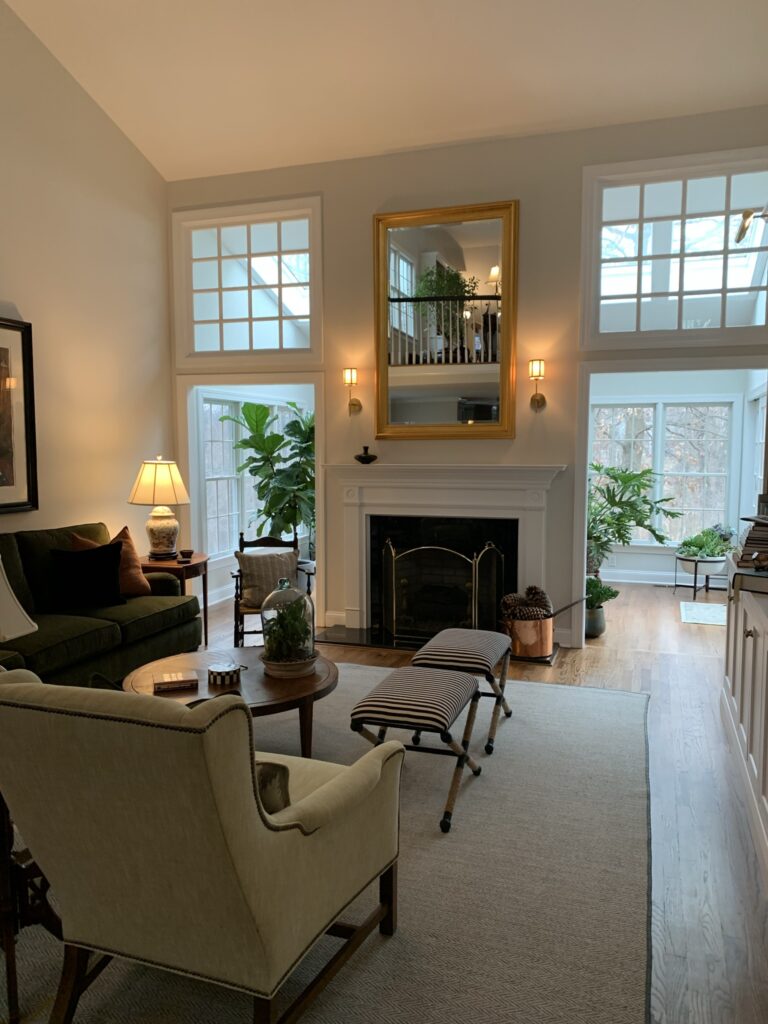
Here you get a glimpse of the role British Cottage played in all this. The stools, armchairs, and sofa are all from our store.
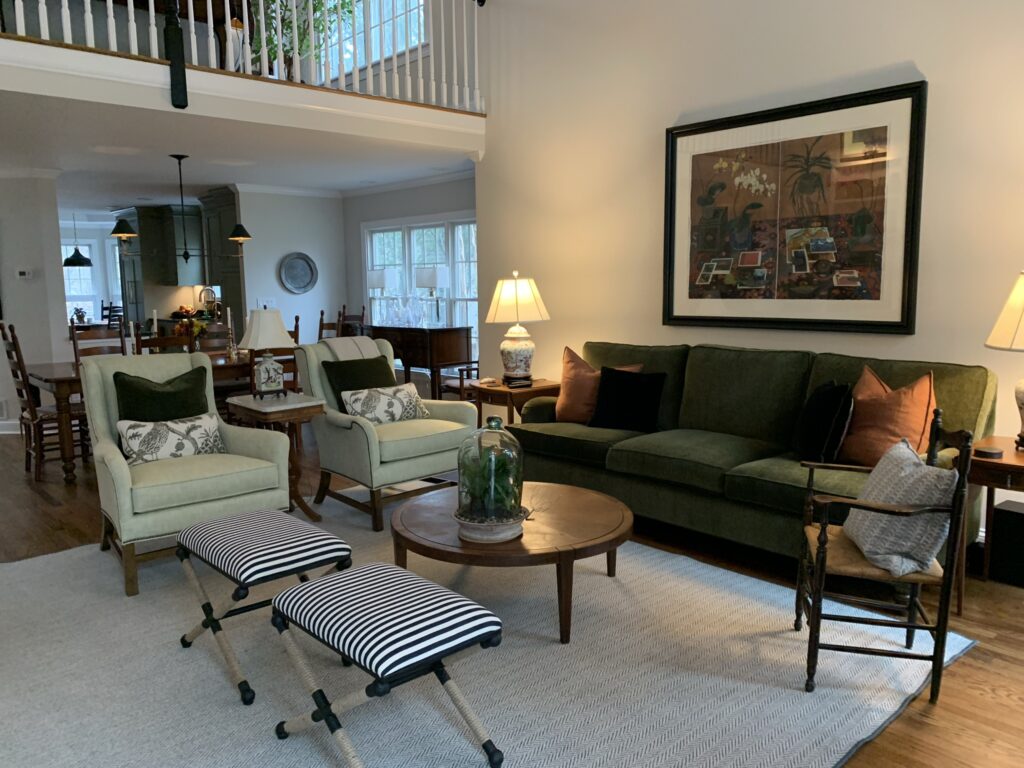
The upholstered armchairs are by Century Furniture in an “Inside/Out” minty green performance fabric. These were a lucky in-store find (you know, or you should know, how I love to buy the showroom samples Century offers after the High Point Markets end). But also by lucky I mean they had something to sit on while they waited for their sofa which was custom made by Hickory White, (one of the more designer-driven divisions of the mighty Sherrill Furniture) in a soft-to-touch, jade-toned fabric.
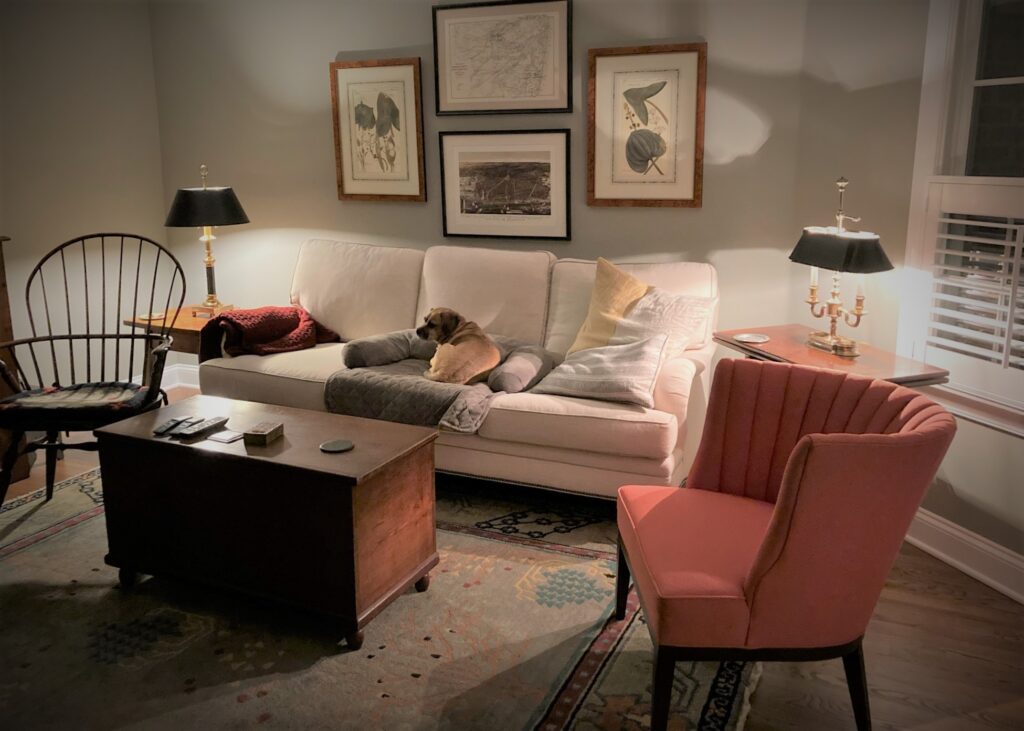
Also from Century (and British Cottage) is the family room sofa and upholstered armchair. This is possibly my favorite photo because of the little puggle (upon his matching throw) positioned in the middle of the sofa–the best seat in the house–or is he just being diplomatic? Note, once again, there is plenty of green going on here in the walls and the rug–and who doesn’t love that pop of coral in the chair–a color we also see in the area rug? Also, note how the chair has a mid-centuryesque vibe but plays well with the early American antiques in the room.
All in all my visit was quite a success. Ordinarily, I might have liked to sample some of the beverages on hand at the bar cleverly attached to the custom breakfront in the living room, but sadly snow was expected that evening and I needed to get to Sickles Market before they closed. I’d been thinking a lot lately about making one of the 11 One-Pot Winner-Winner Chicken Dinners recently featured in the New York Times and the one I picked had everything from fennel to anchovies–so getting to Sickles was critical.
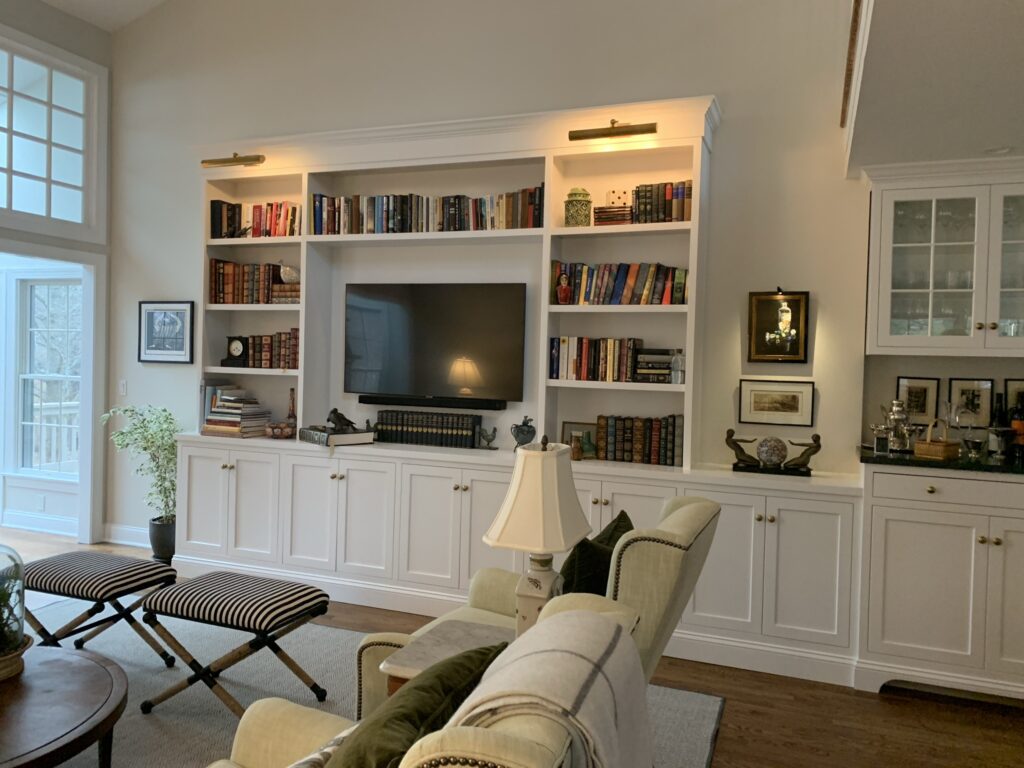
FYI:
JT Norman… built-ins in the living room, office, and master closet /cabinets
Karen Barnes at Millhurst Mills…kitchen and master bathroom cabinets
Paul Gordacyk…. Kitchen and dining room table
Now onto dinner. I bought so Keith got to be the chef.
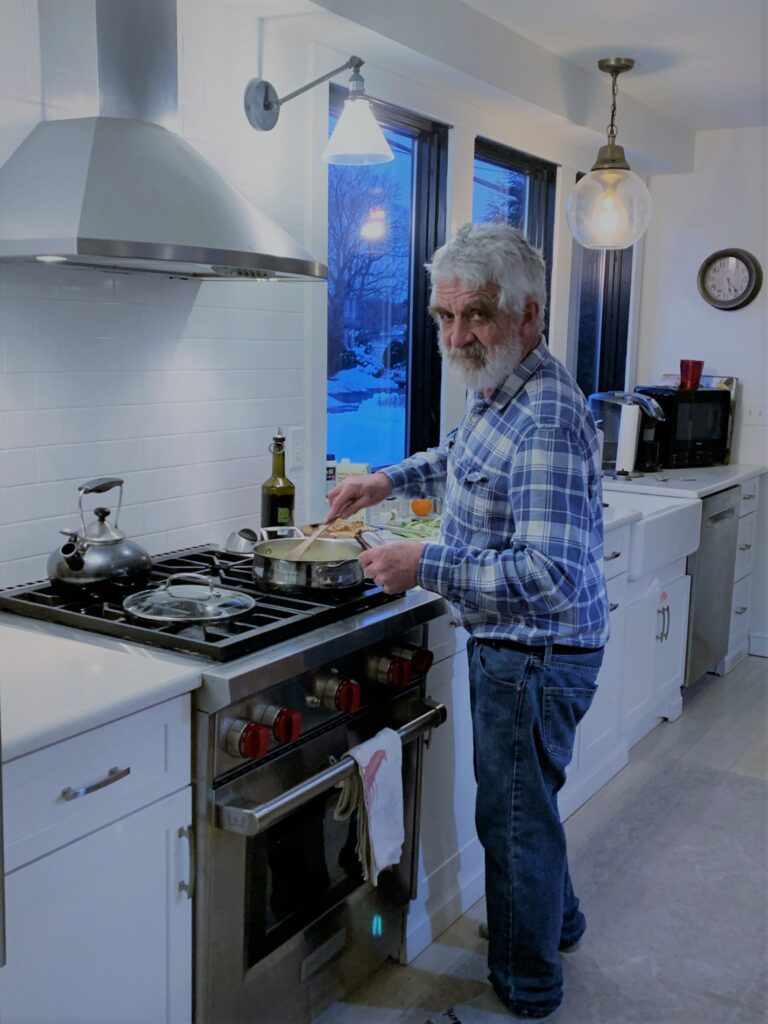
#8. Recipe from NY Times: Skillet Chicken and Rice With Anchovies and Olives
INGREDIENTS
- 2 tablespoons olive oil, plus more for drizzling
- 2 pounds bone-in, skin-on chicken thighs (4 to 6 thighs)
- Kosher salt and black pepper
- 1 medium fennel bulb, trimmed, cored and diced, plus more fennel fronds, for serving
- 1 medium yellow onion, diced
- 1 teaspoon dried oregano
- ¼ cup roughly chopped anchovy fillets
- 5 garlic cloves, minced
- ¼ teaspoon red-pepper flakes, plus more to taste
- 1 tablespoon tomato paste
- ¾ cup dry white wine, such as pinot grigio
- 1 cup long-grain white rice
- ¾ cup pitted Castelvetrano or other green olives, halved lengthwise
- ⅓ cup raisins, preferably golden
- 2 cups low-sodium chicken broth
- 1 medium navel orange, 1/2 juiced and 1/2 thinly sliced
PREPARATION
- Heat the oven to 325 degrees. In a 12-inch skillet with a lid, heat the 2 tablespoons olive oil over medium. Pat the chicken thighs dry with a paper towel and season them with salt and pepper. When the oil is hot, place the thighs in the skillet, skin-side down. Cook, undisturbed, for 8 to 10 minutes, or until the skin is golden brown and the chicken releases easily from the pan. You may need to raise the heat slightly during the last few minutes if the skin isn’t browned enough.
- Flip the chicken thighs and cook for 3 minutes on the other side, then transfer to a plate and set aside.
- Discard all but about 3 tablespoons of fat from the skillet. Add the diced fennel, onion, and oregano, and cook over medium for 6 to 8 minutes, stirring occasionally, until the vegetables are tender. Add the anchovies, garlic, and red pepper flakes and cook for 1 to 2 minutes, until the garlic is fragrant.
- Add the tomato paste and cook, stirring often, until it begins to caramelize and turn rusty brown in color. Add the wine and cook, scraping up any brown bits from the bottom of the pan, until the liquid has almost completely evaporated.
- Add the rice, olives, and raisins to the skillet and cook, stirring, for 1 minute. Add the chicken broth, orange juice, and a few grinds of black pepper, and bring to a simmer.
- Place the chicken thighs on top, skin-side up, nestling them into the liquid so only the skin is above the surface. Cut the orange slices into half-moons and arrange them around the chicken. Drizzle the orange slices with olive oil.
- Cover and bake for 30 minutes, or until the rice is tender and the liquid has been absorbed. (If you’d like to crisp the chicken skin, pop the pan under the broiler for 2 to 3 minutes.)
- Top with fennel fronds, more red pepper flakes, and a sprinkle of salt. Serve hot.
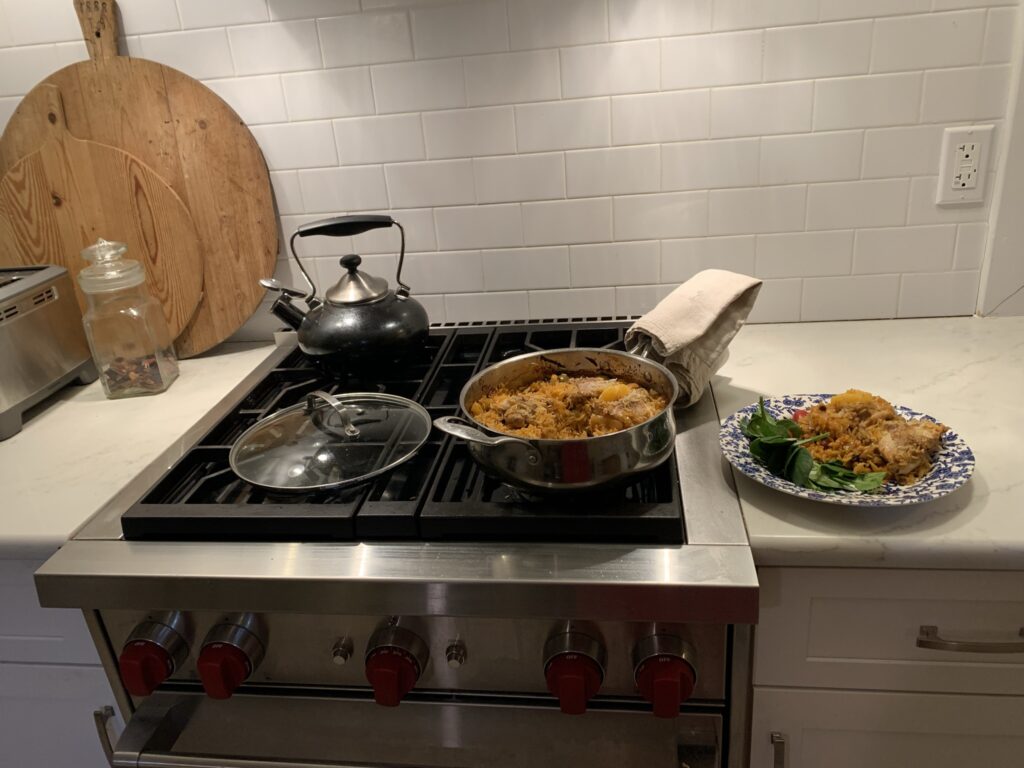
Keith followed the recipe exactly and it was delish!

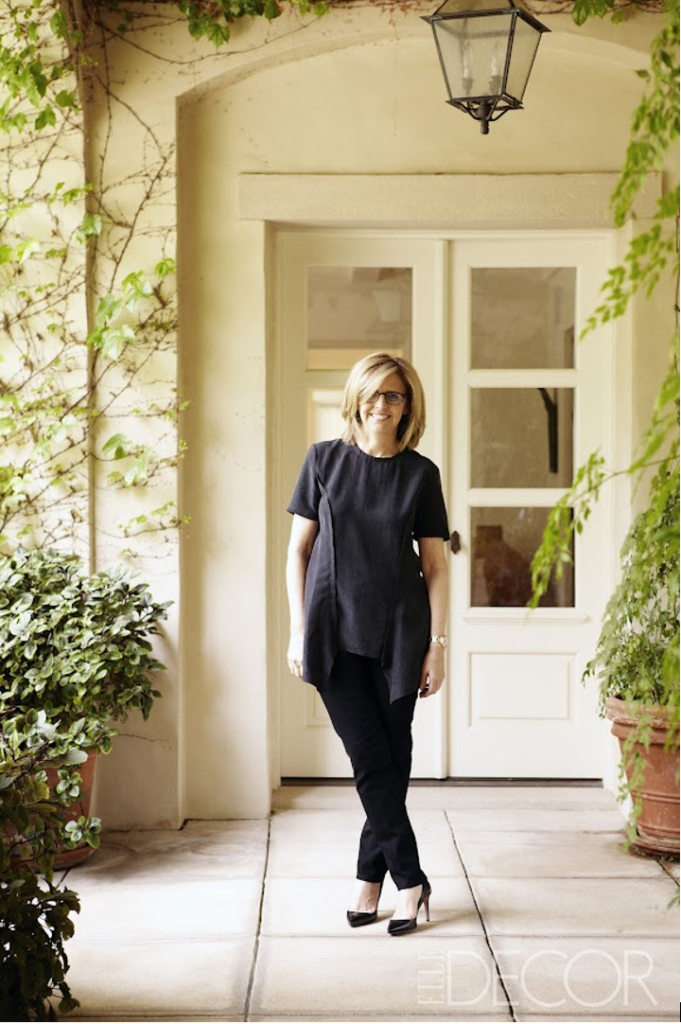

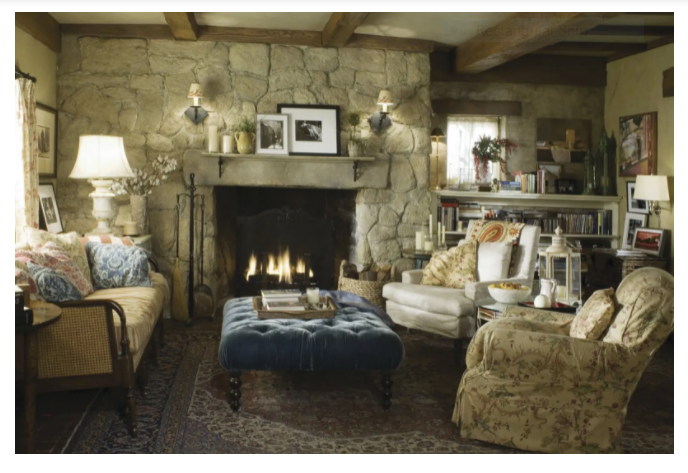
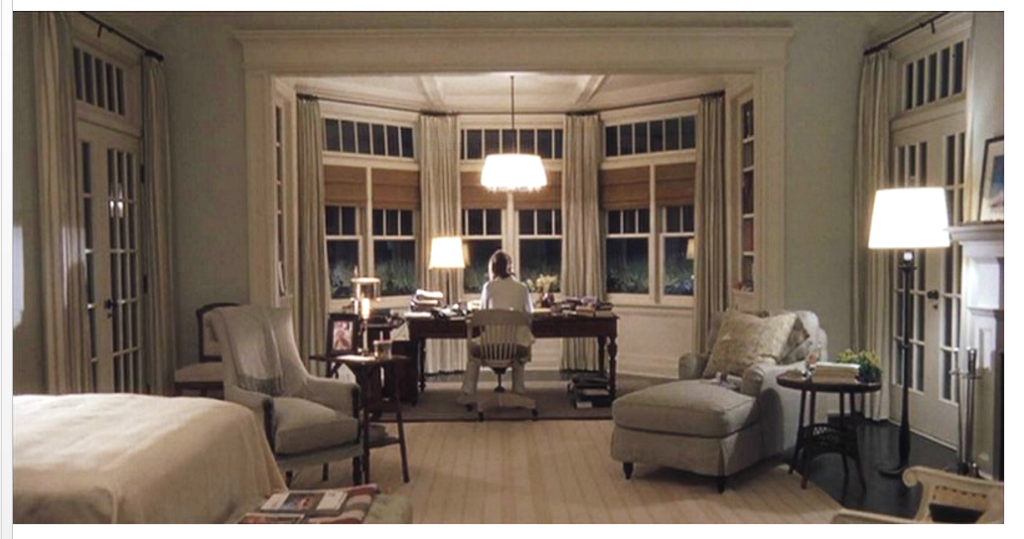
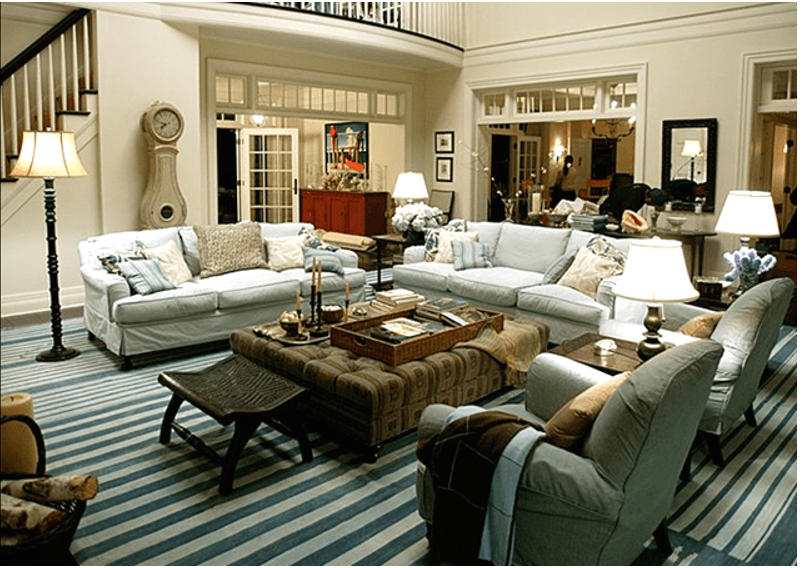
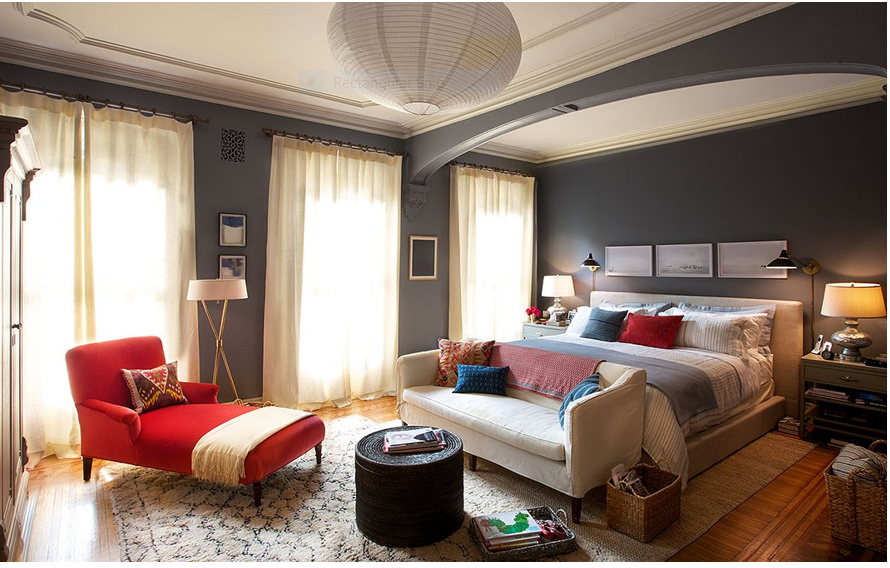

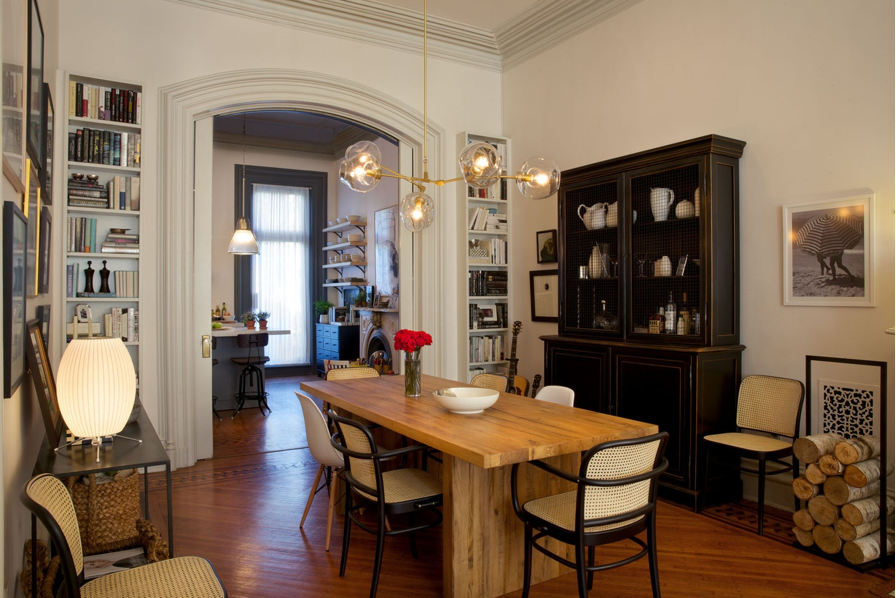

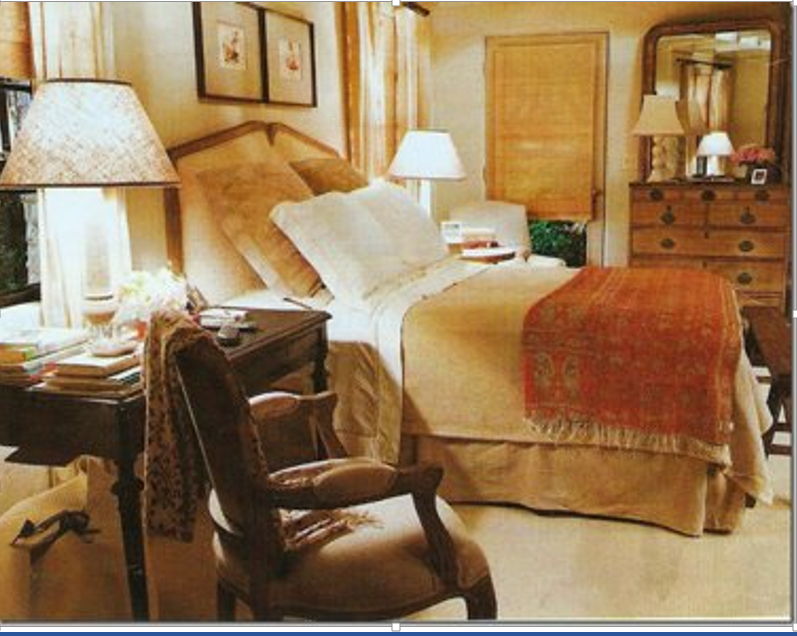
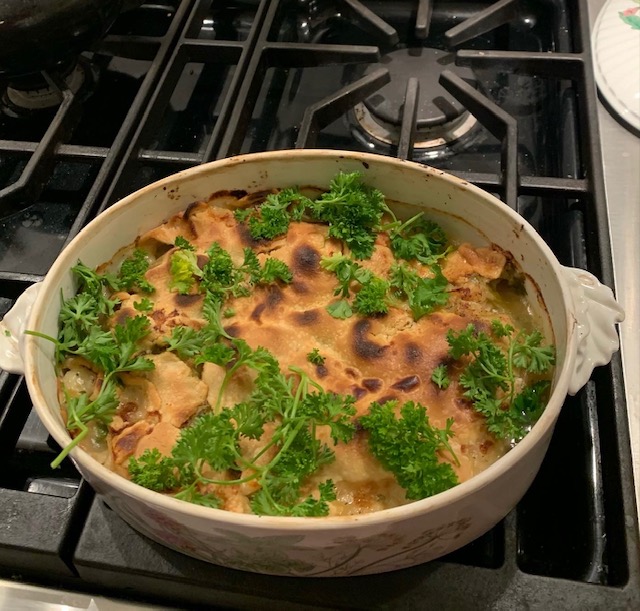
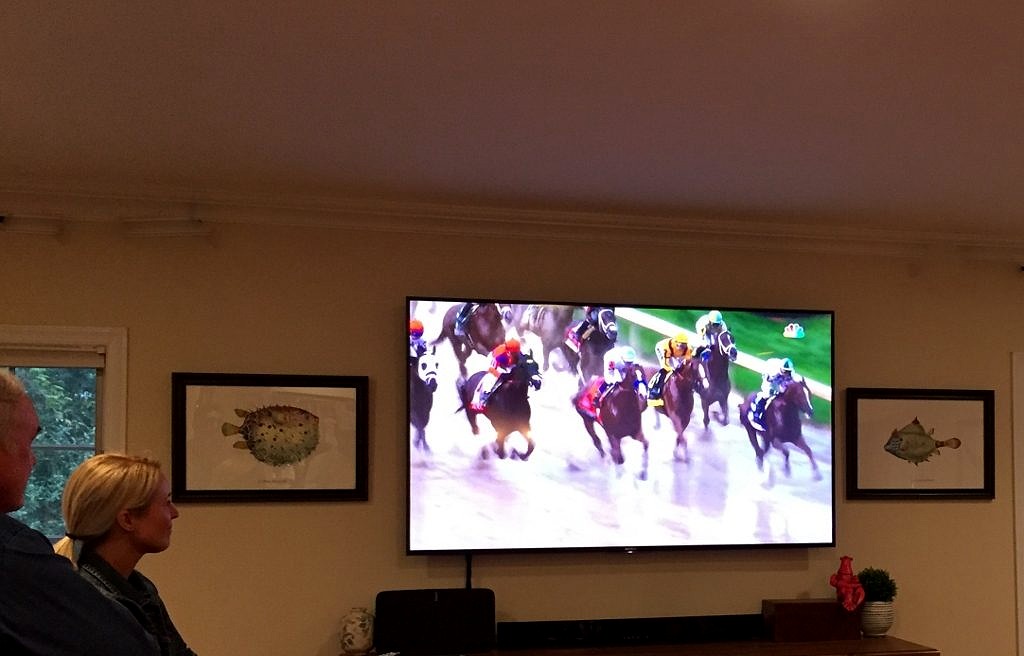 Given the rotten weather we’ve been having these days the only way I was sure spring was here was when I was drinking mint juleps and watching the Kentucky Derby. We were happy to be invited to a small gathering of friends, parents, children–and dogs at the Lindekin home in Shrewsbury–second generation British Cottage shoppers by the way. Which is good because it confirms that the love of decorating is genetic and sad because we are clearly getting up there.
Given the rotten weather we’ve been having these days the only way I was sure spring was here was when I was drinking mint juleps and watching the Kentucky Derby. We were happy to be invited to a small gathering of friends, parents, children–and dogs at the Lindekin home in Shrewsbury–second generation British Cottage shoppers by the way. Which is good because it confirms that the love of decorating is genetic and sad because we are clearly getting up there. Their house is painted a cheerful yellow with two bay windows flanking the front door; it may technically be a starter home, but I could easily see finishing up here. The yard is huge and the house is bigger than it looks because the previous owners were very careful not to let the large extension they put on in the back impact on the charm of the original structure.
Their house is painted a cheerful yellow with two bay windows flanking the front door; it may technically be a starter home, but I could easily see finishing up here. The yard is huge and the house is bigger than it looks because the previous owners were very careful not to let the large extension they put on in the back impact on the charm of the original structure. And on the right is what was the dining room but now is a kind of an enlarged foyer. There was a huge debate about what to put in this room–clearly they nailed it!
And on the right is what was the dining room but now is a kind of an enlarged foyer. There was a huge debate about what to put in this room–clearly they nailed it!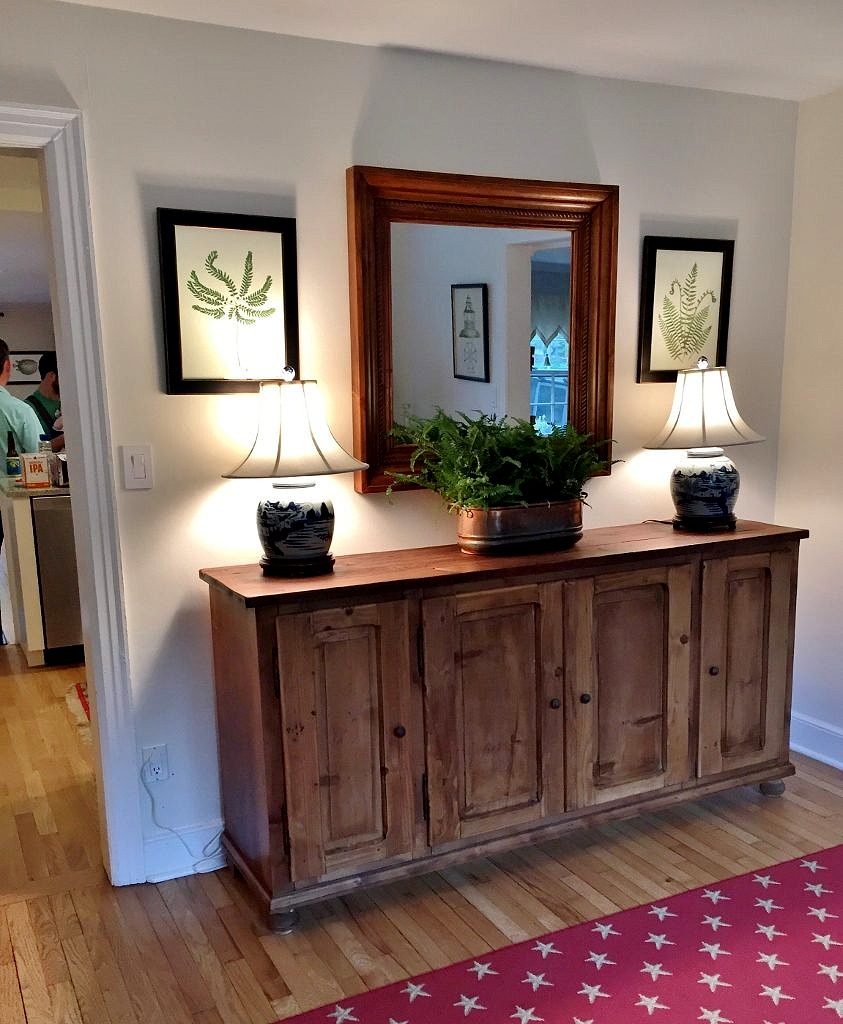 Now all the dining takes place in the extension, which also houses the flatscreen televison, and man cave elements like the huge leather couch –and the bar. The cabinet anchoring the TV is a British Cottage find, as are the vintage French fish prints.
Now all the dining takes place in the extension, which also houses the flatscreen televison, and man cave elements like the huge leather couch –and the bar. The cabinet anchoring the TV is a British Cottage find, as are the vintage French fish prints.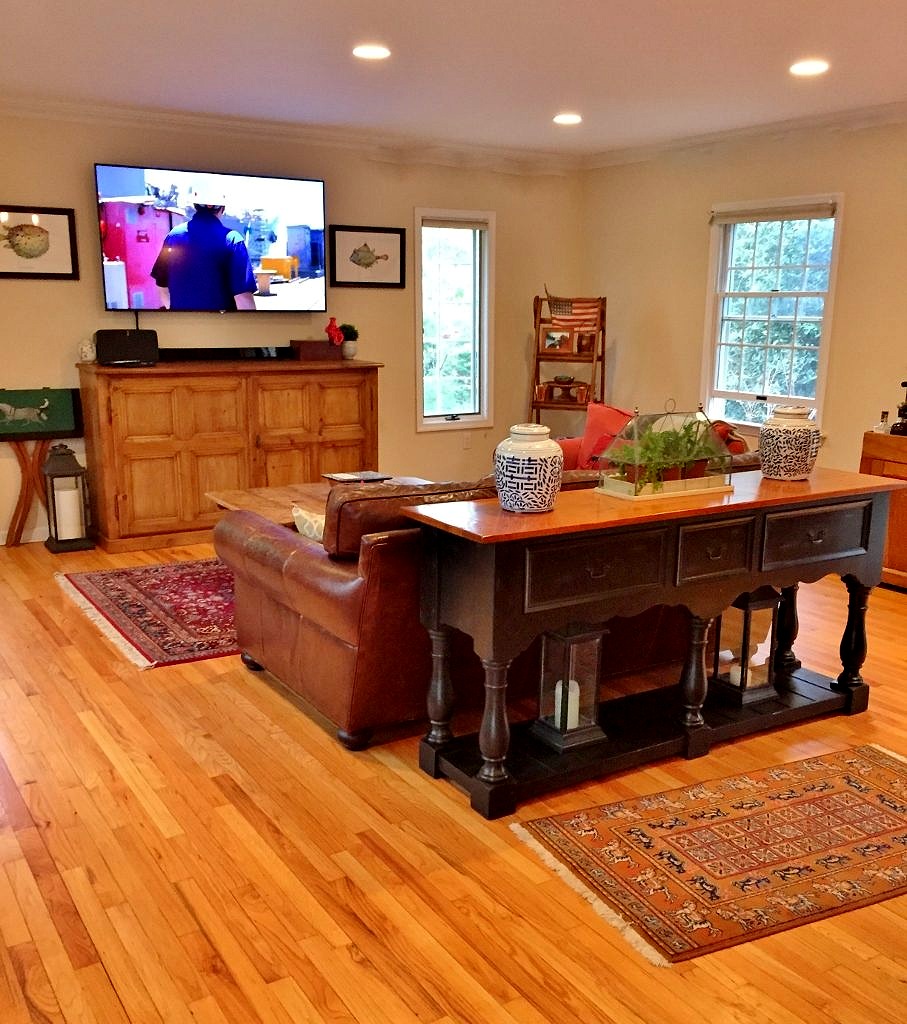
 Then there is a huge farm table (from British Cottage) that this evening was all set up for a glorious buffet supper.
Then there is a huge farm table (from British Cottage) that this evening was all set up for a glorious buffet supper. Which all the guests, and hosts, enjoyed immensely.
Which all the guests, and hosts, enjoyed immensely.


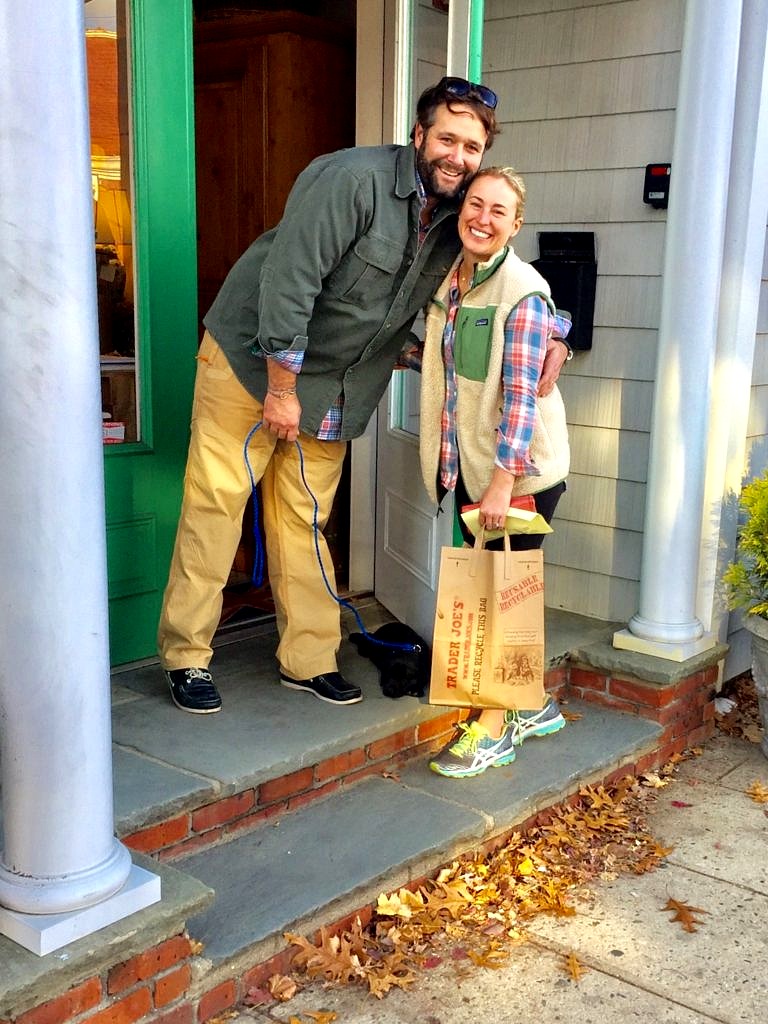
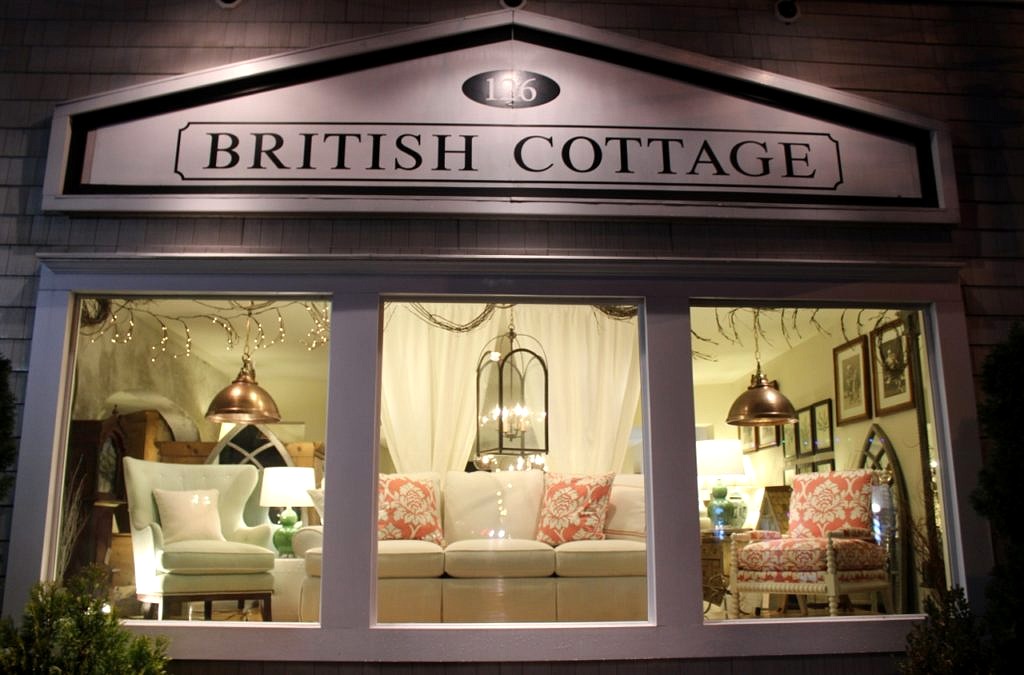
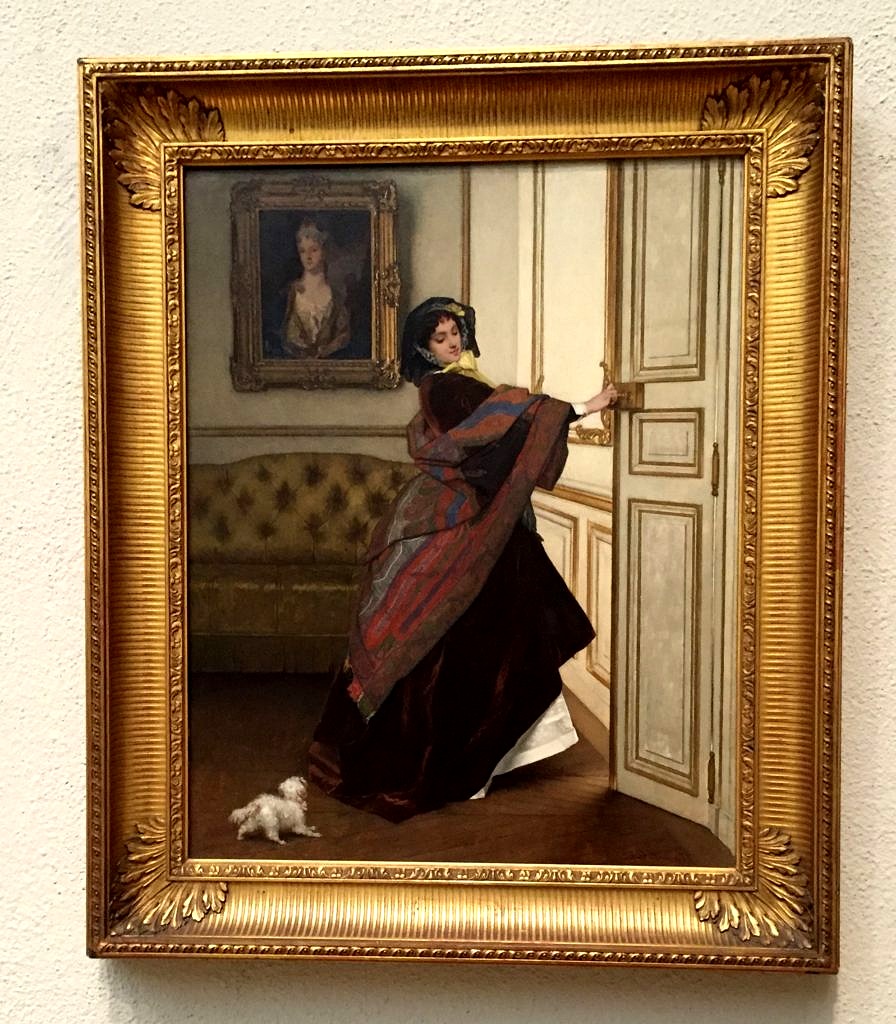 We began 2017 at The Philadelphia Museum of Art, happily wandering through room after room of priceless artwork, and decorative objects from all over the world. Often people remark on how beautiful our store looks, and are amazed that neither Keith nor I have a background in design. Over the years we’ve gotten very good at selecting and presenting the objects we sell basically by just looking at everything, everywhere. Most of the largest museums have several floors filled with completely furnished rooms from different periods and even other countries on exhibit–making it possible to soak up several centuries of interior decorating–in just one afternoon.
We began 2017 at The Philadelphia Museum of Art, happily wandering through room after room of priceless artwork, and decorative objects from all over the world. Often people remark on how beautiful our store looks, and are amazed that neither Keith nor I have a background in design. Over the years we’ve gotten very good at selecting and presenting the objects we sell basically by just looking at everything, everywhere. Most of the largest museums have several floors filled with completely furnished rooms from different periods and even other countries on exhibit–making it possible to soak up several centuries of interior decorating–in just one afternoon.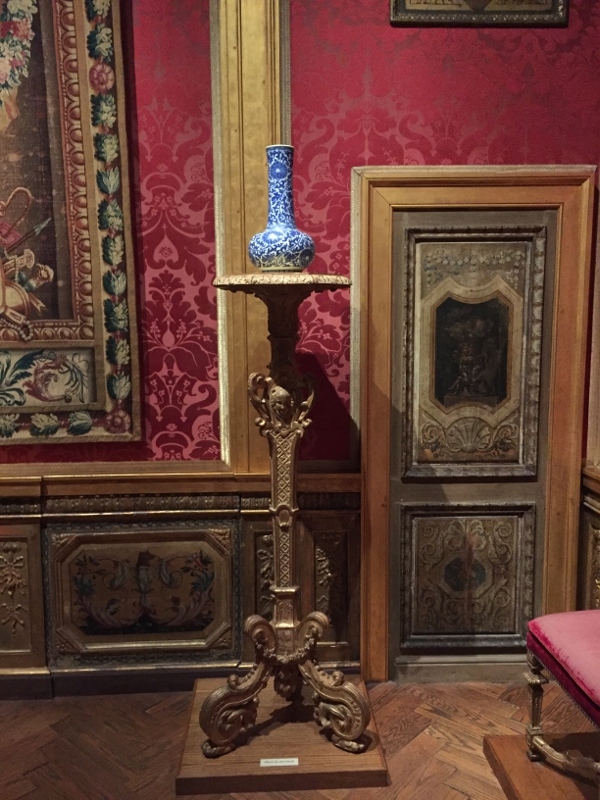 Next up in January was Atlanta and the America’s Mart, literally over a million square feet of the latest and greatest in Home Furnishings and Accessories, and we wandered around there for several days. Besides thousands of vendors and products, America’s Mart featured a series of room-size vignettes styled by a half dozen leaders in American interior design.
Next up in January was Atlanta and the America’s Mart, literally over a million square feet of the latest and greatest in Home Furnishings and Accessories, and we wandered around there for several days. Besides thousands of vendors and products, America’s Mart featured a series of room-size vignettes styled by a half dozen leaders in American interior design.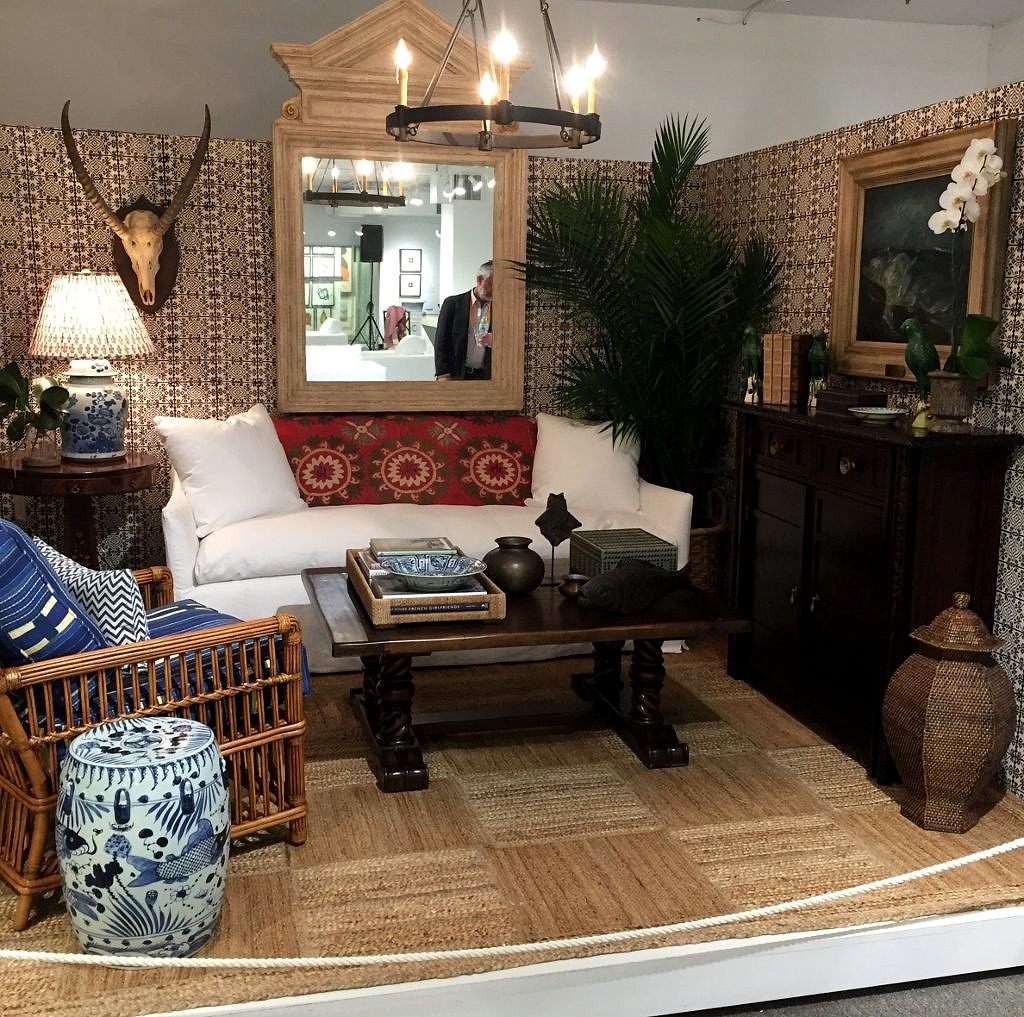 Everything old is new again. While the first interior is from 18th century England, on display at The Philadelphia Museum of Art, and the second by a very 21st century Austin Texas designer, you can see similarities. Pattern, color and texture are blended, not matched. And some objects are simply timeless, like blue and white porcelain, or an architectural mirror. Which leads me to the next bit of wisdom.
Everything old is new again. While the first interior is from 18th century England, on display at The Philadelphia Museum of Art, and the second by a very 21st century Austin Texas designer, you can see similarities. Pattern, color and texture are blended, not matched. And some objects are simply timeless, like blue and white porcelain, or an architectural mirror. Which leads me to the next bit of wisdom.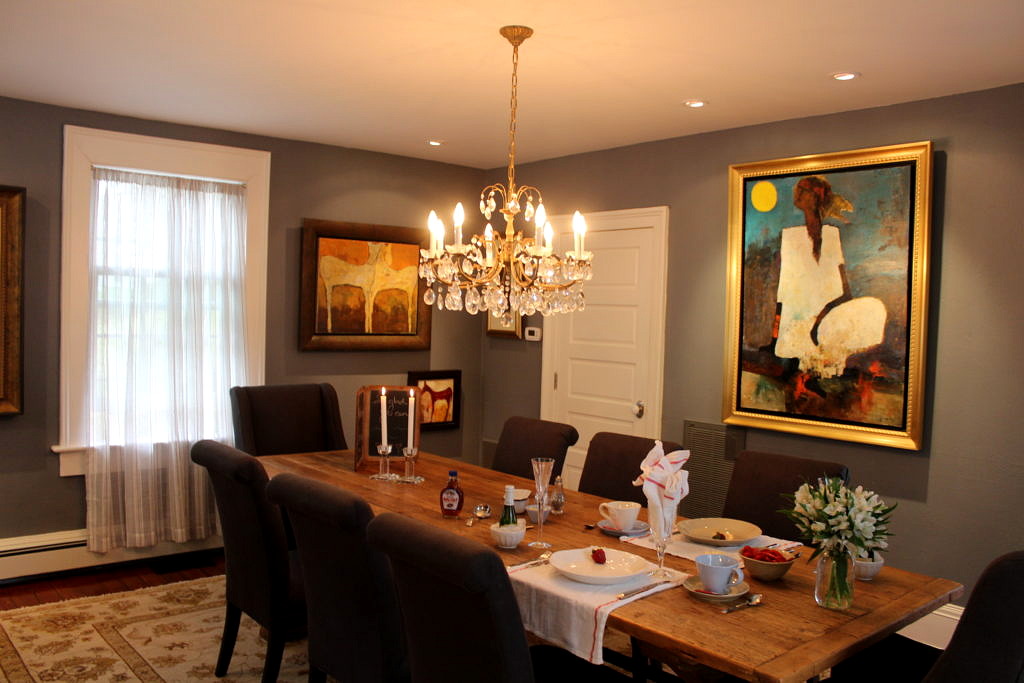

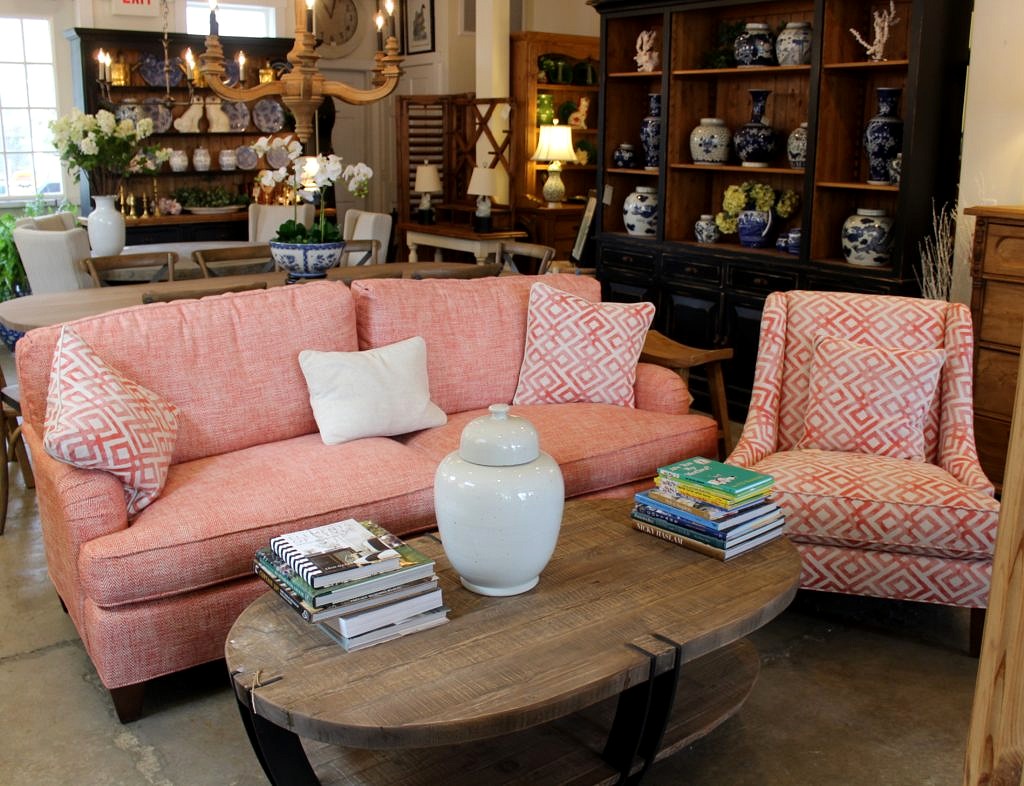
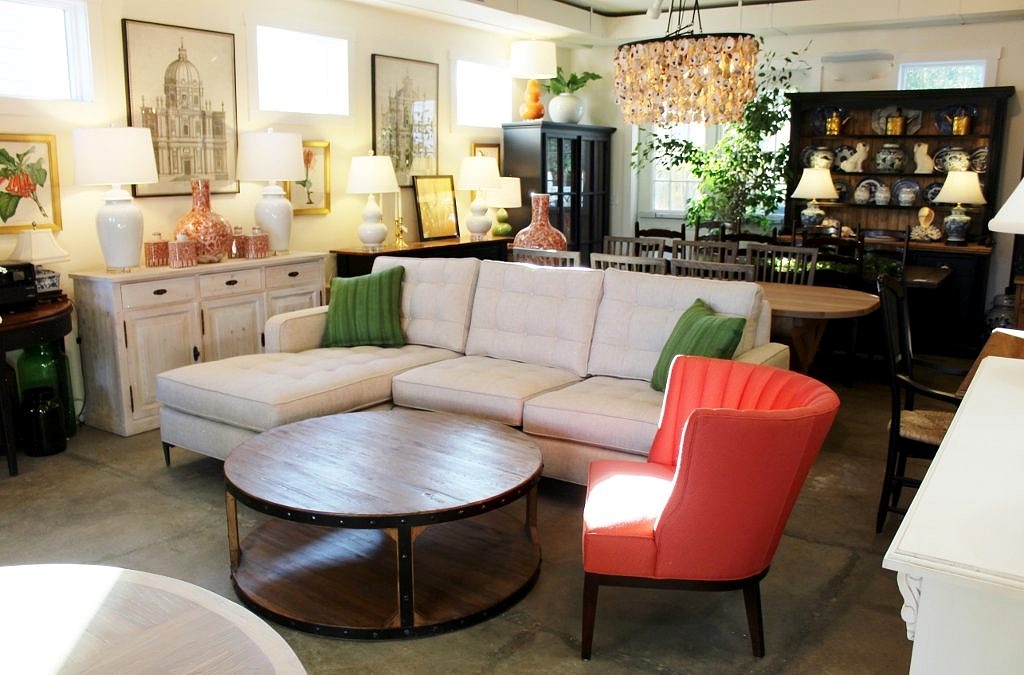
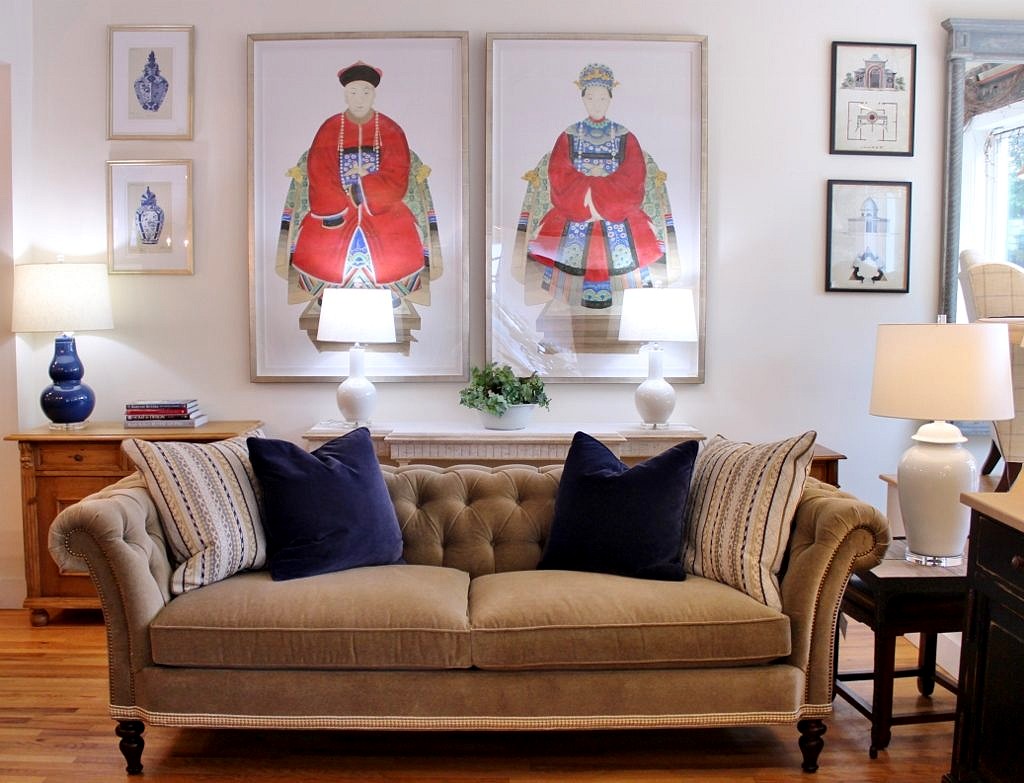 Lastly, have some fun. Decorating is all about making your home, and by extension, your life more enjoyable. It does not have to be perfect; it has to be welcoming. When I grew up in Rumson 1000 years ago many of my friends lived in huge houses with huge rooms with matching carpets and couches and window treatments and guess what? Nobody was allowed in them!
Lastly, have some fun. Decorating is all about making your home, and by extension, your life more enjoyable. It does not have to be perfect; it has to be welcoming. When I grew up in Rumson 1000 years ago many of my friends lived in huge houses with huge rooms with matching carpets and couches and window treatments and guess what? Nobody was allowed in them!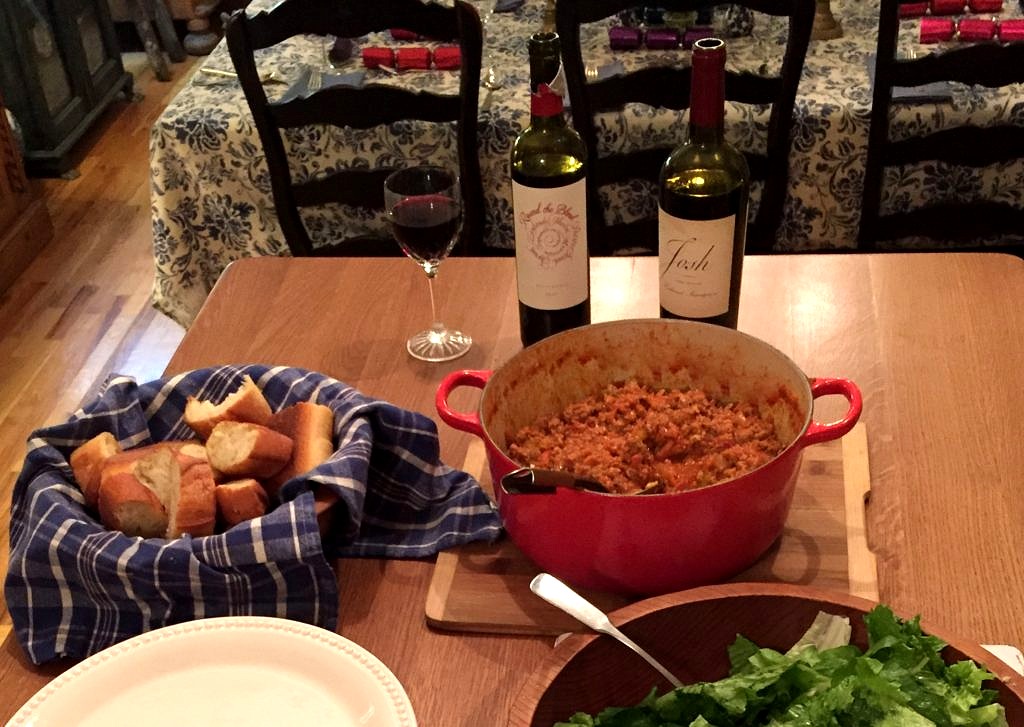
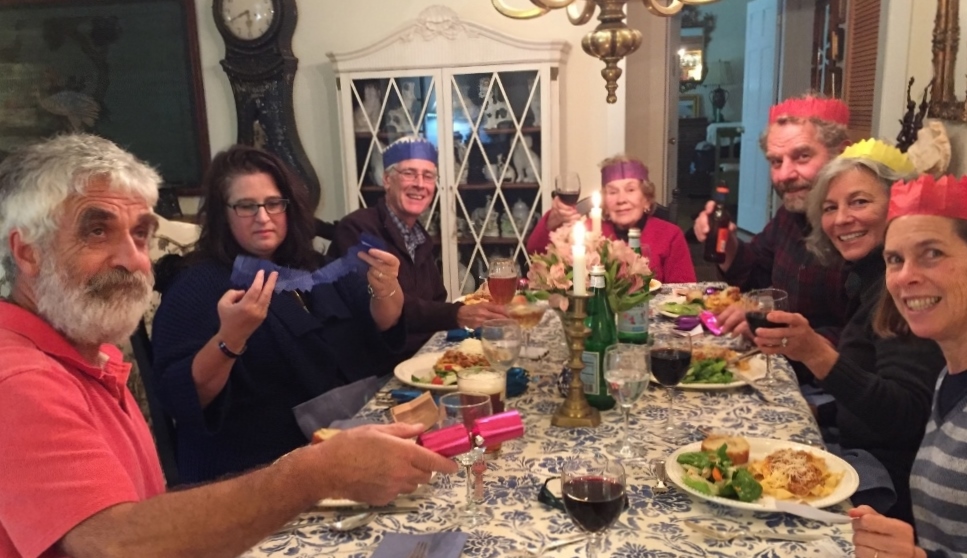
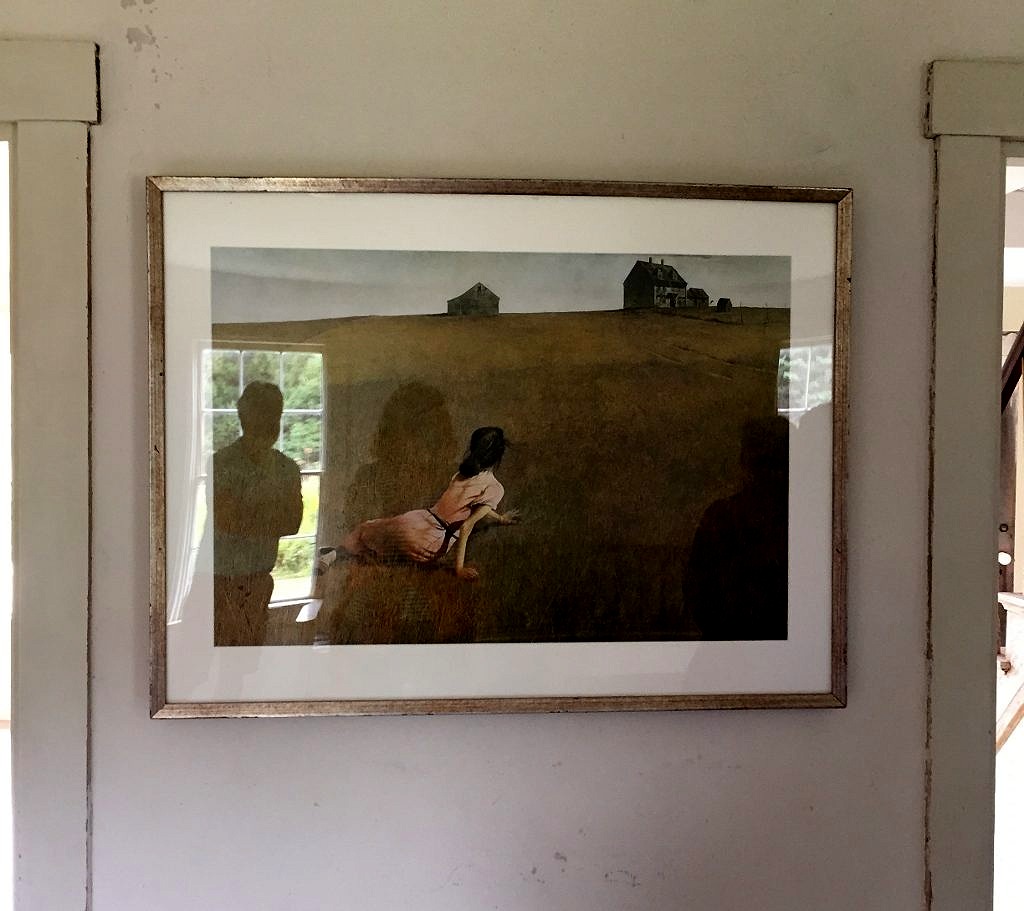 I never really liked the painting. It always seemed creepy and sad but when you summer in coastal Maine it is hard to avoid the legendary Wyeth and I am bedazzled by many of his other works. At least once a year I make a pilgrimage to The Farnsworth Museum in Rockland to soak up some Wyeth-ness and this year, for a few extra dollars purchased a ticket to visit The Olson House in nearby Cushing.
I never really liked the painting. It always seemed creepy and sad but when you summer in coastal Maine it is hard to avoid the legendary Wyeth and I am bedazzled by many of his other works. At least once a year I make a pilgrimage to The Farnsworth Museum in Rockland to soak up some Wyeth-ness and this year, for a few extra dollars purchased a ticket to visit The Olson House in nearby Cushing.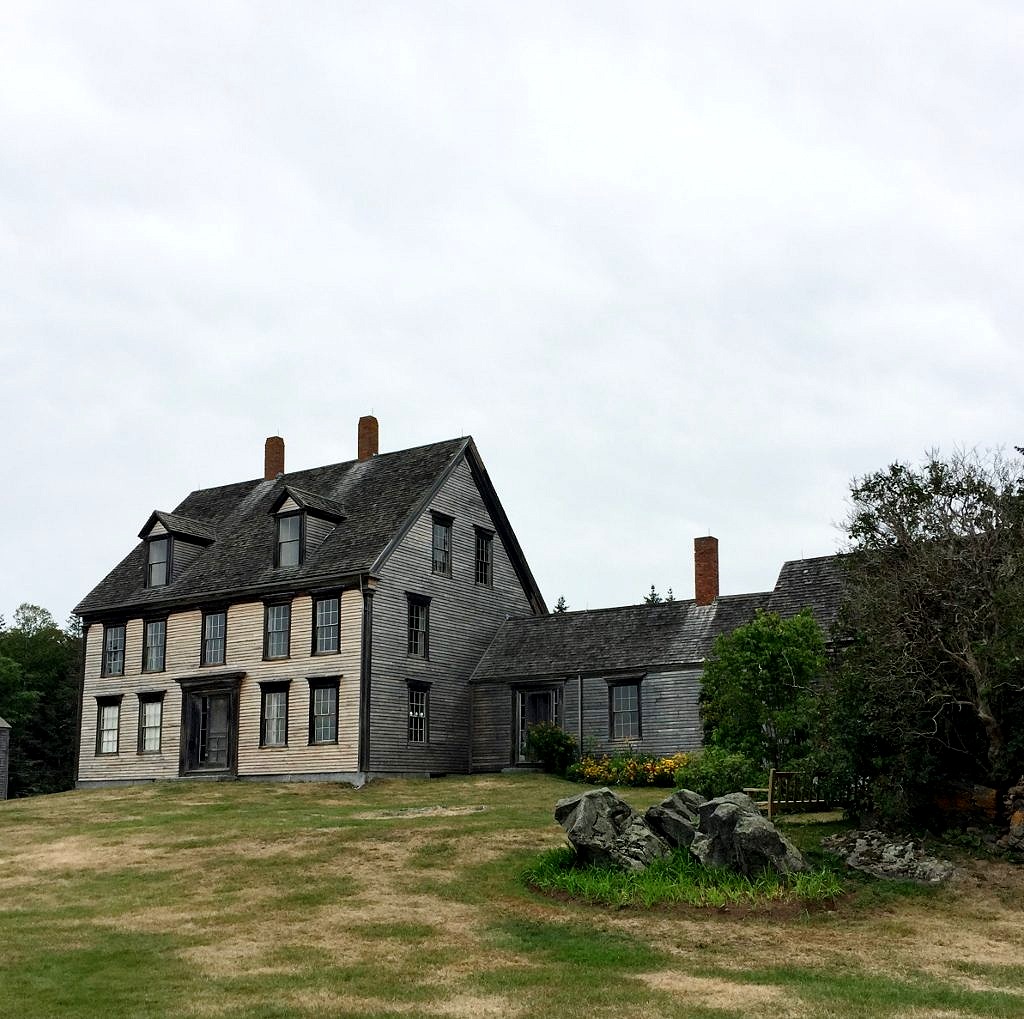
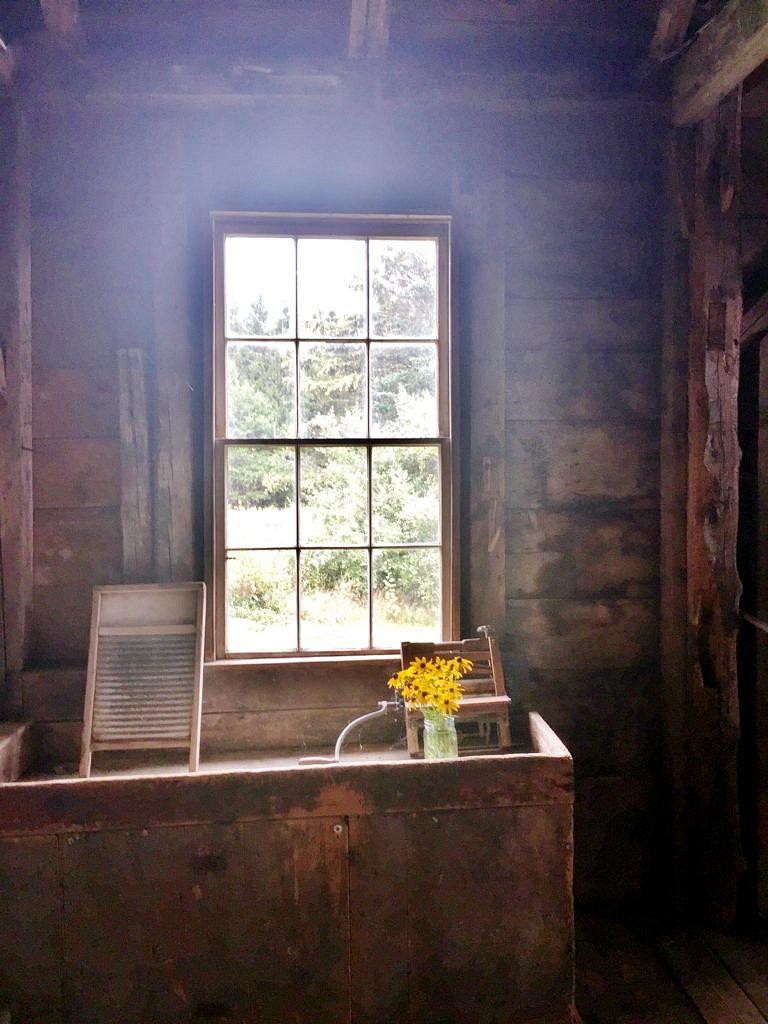
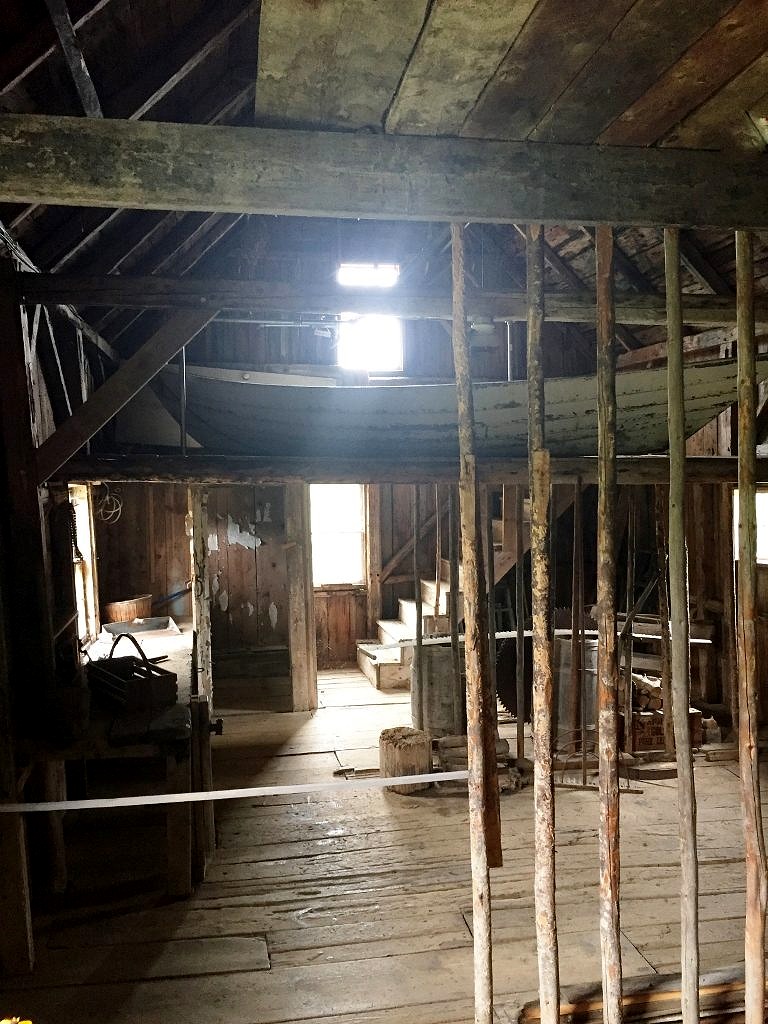 If you get a chance, go. And go soon because it is only a matter of time before the house is cleaned up, and the public partitioned off. Right now every room is accessible and virtually untouched from the days the Olsons lived there. You can see the rooms as Andrew Wyeth saw them and know how terrible, and how wonderful Christina’s world must have been.
If you get a chance, go. And go soon because it is only a matter of time before the house is cleaned up, and the public partitioned off. Right now every room is accessible and virtually untouched from the days the Olsons lived there. You can see the rooms as Andrew Wyeth saw them and know how terrible, and how wonderful Christina’s world must have been.
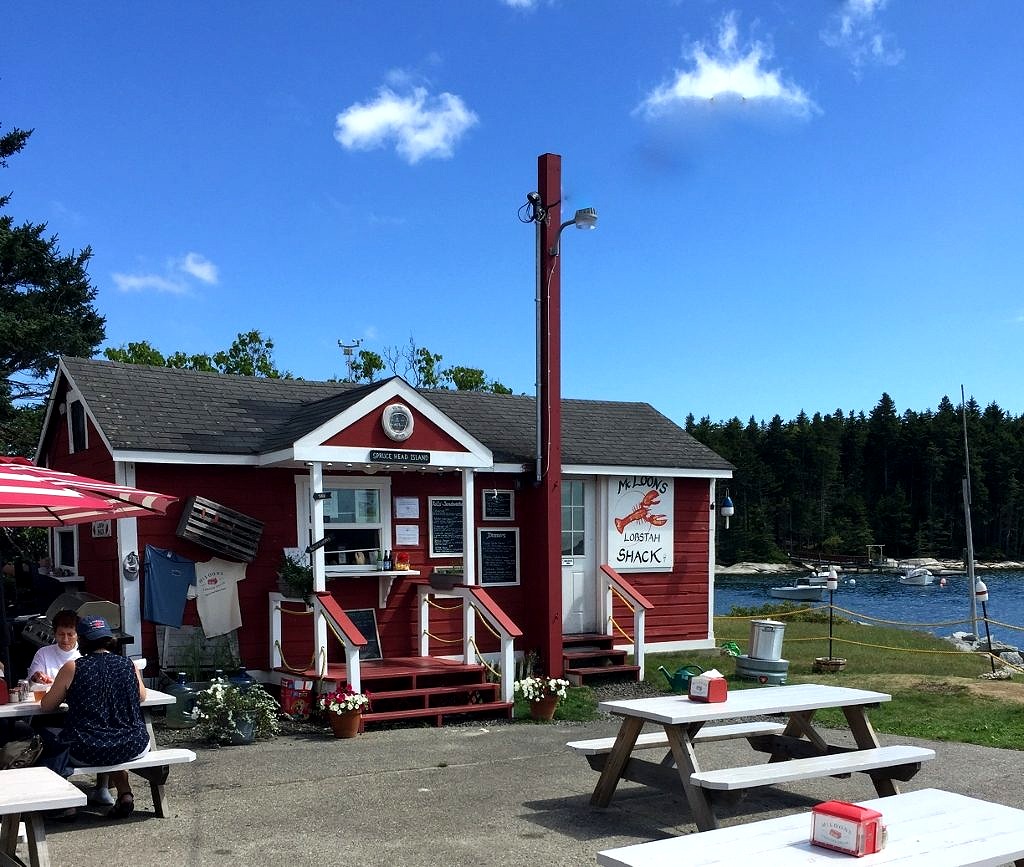 It was really good, but if you can’t get to Maine anytime soon don’t fret, my recipe may just be better.
It was really good, but if you can’t get to Maine anytime soon don’t fret, my recipe may just be better.

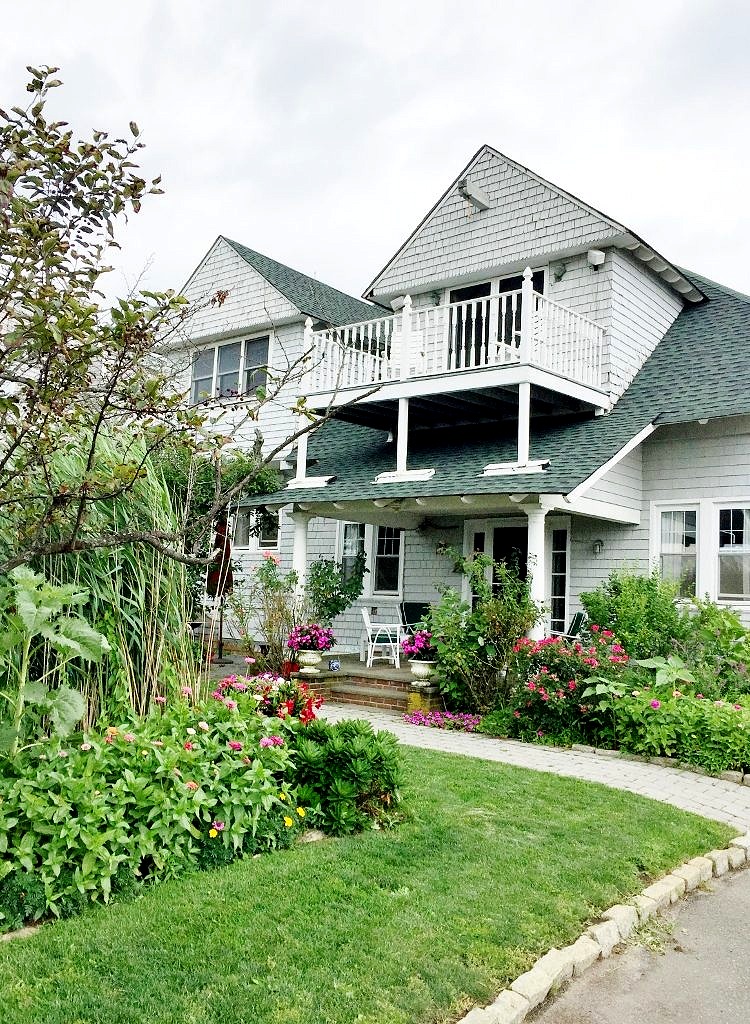 A hundred years ago Sea Bright was just a small fishing village nestled on the sand spit separating the Atlantic Ocean from the Shrewsbury River. The humbleness of the town was in direct contrast to the grandeur of the large vacation homes surrounding it. Mainly owned by wealthy New Yorkers, they employed architects, like the renowned Stanford White, to design intricate, multi-storied shingle style houses so they could enjoy the Jersey Shore’s ample sunshine and refreshing sea breezes in comfort.
A hundred years ago Sea Bright was just a small fishing village nestled on the sand spit separating the Atlantic Ocean from the Shrewsbury River. The humbleness of the town was in direct contrast to the grandeur of the large vacation homes surrounding it. Mainly owned by wealthy New Yorkers, they employed architects, like the renowned Stanford White, to design intricate, multi-storied shingle style houses so they could enjoy the Jersey Shore’s ample sunshine and refreshing sea breezes in comfort.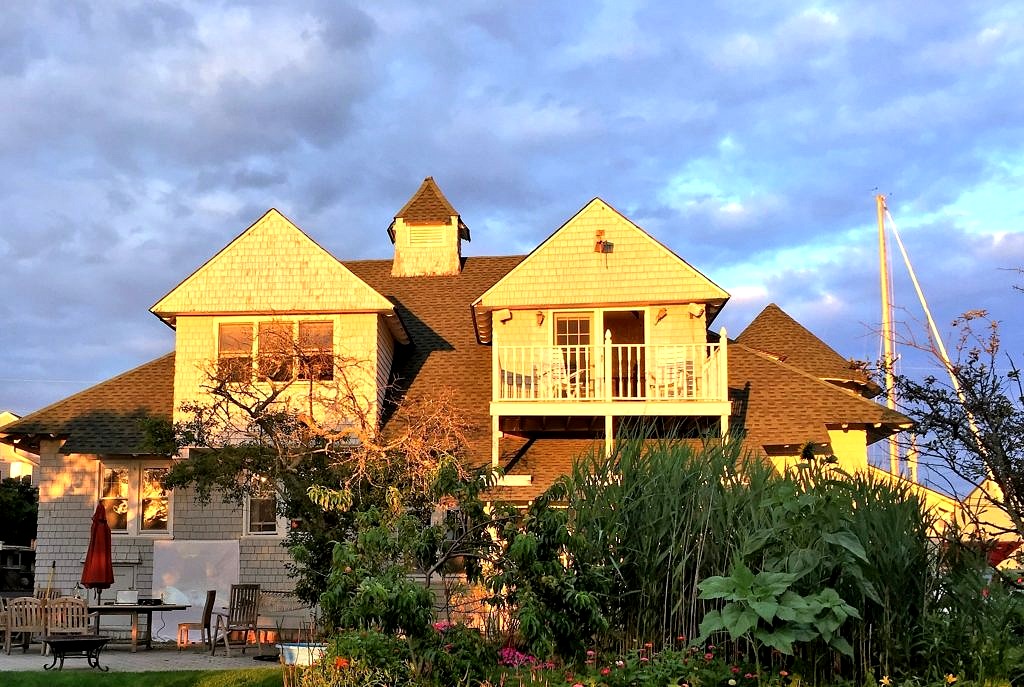 This beautiful building is a survivor–no mean feat considering it sits barely above sea level a stone’s throw from the river. Nor’easters, and of course hurricanes are a constant threat–the latest was Sandy in 2012.
This beautiful building is a survivor–no mean feat considering it sits barely above sea level a stone’s throw from the river. Nor’easters, and of course hurricanes are a constant threat–the latest was Sandy in 2012.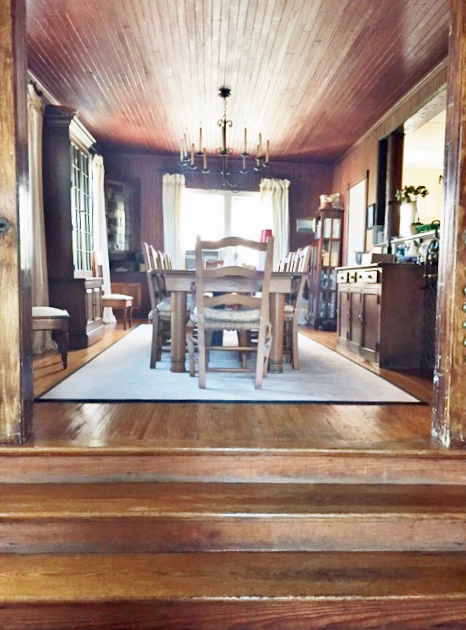
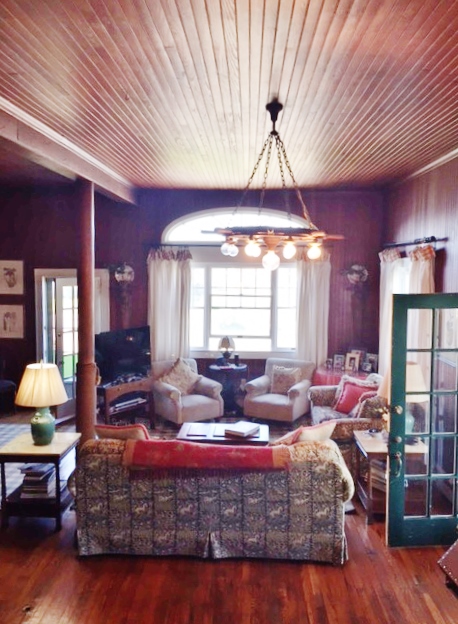 While the side yard is a parking lot–this is a working marina after all–
While the side yard is a parking lot–this is a working marina after all– there is a large front lawn that ends where the river starts. Flanked by daylilies and hydrangeas, and a huge border of what looks to be ornamentals, but is, in reality, a massive vegetable garden, it is the perfect spot for plunking down with a book on a sunny day–or to have a party!
there is a large front lawn that ends where the river starts. Flanked by daylilies and hydrangeas, and a huge border of what looks to be ornamentals, but is, in reality, a massive vegetable garden, it is the perfect spot for plunking down with a book on a sunny day–or to have a party!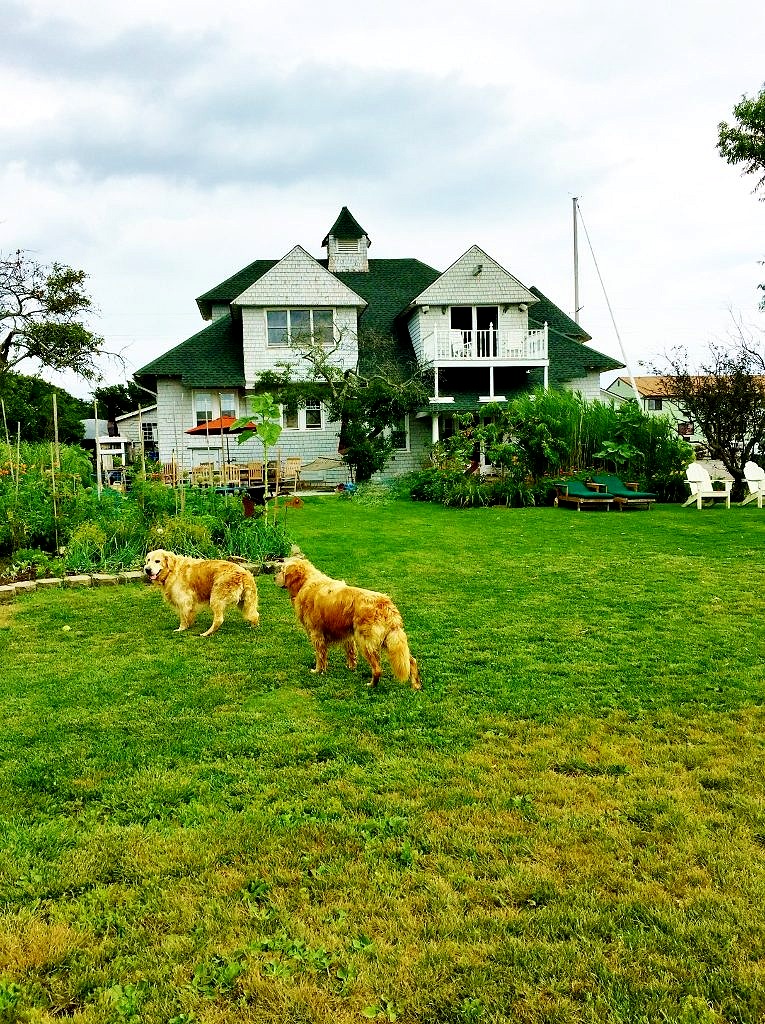
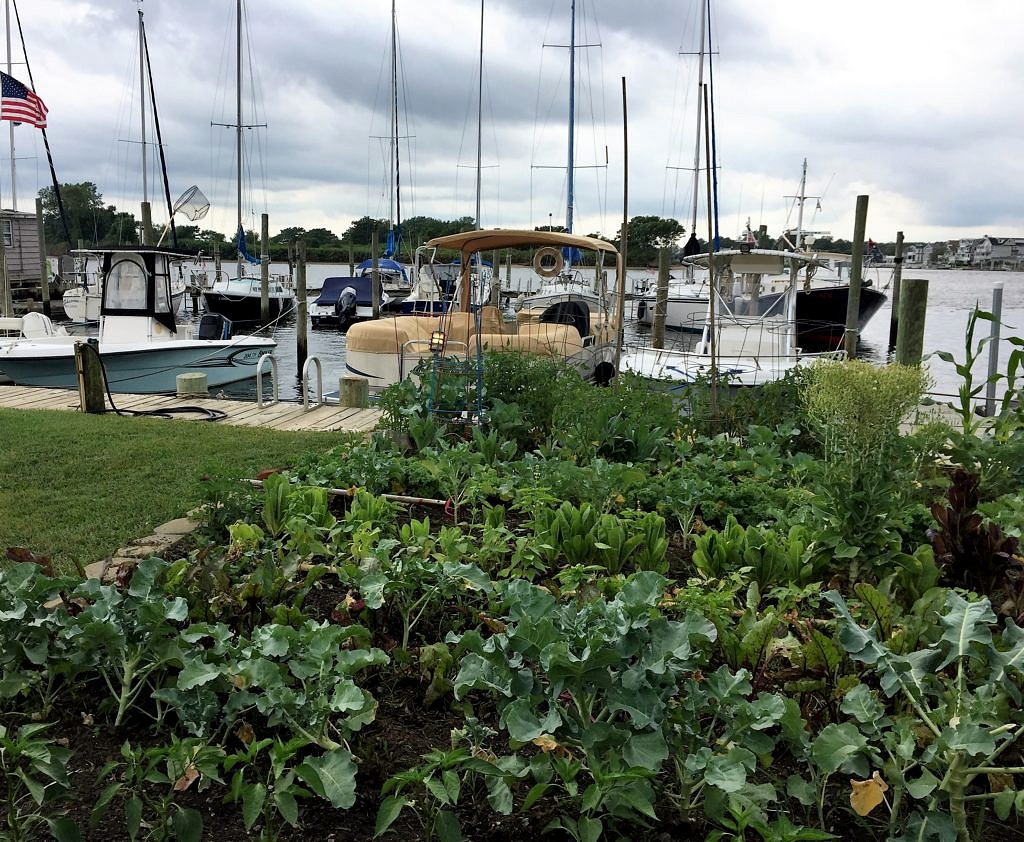


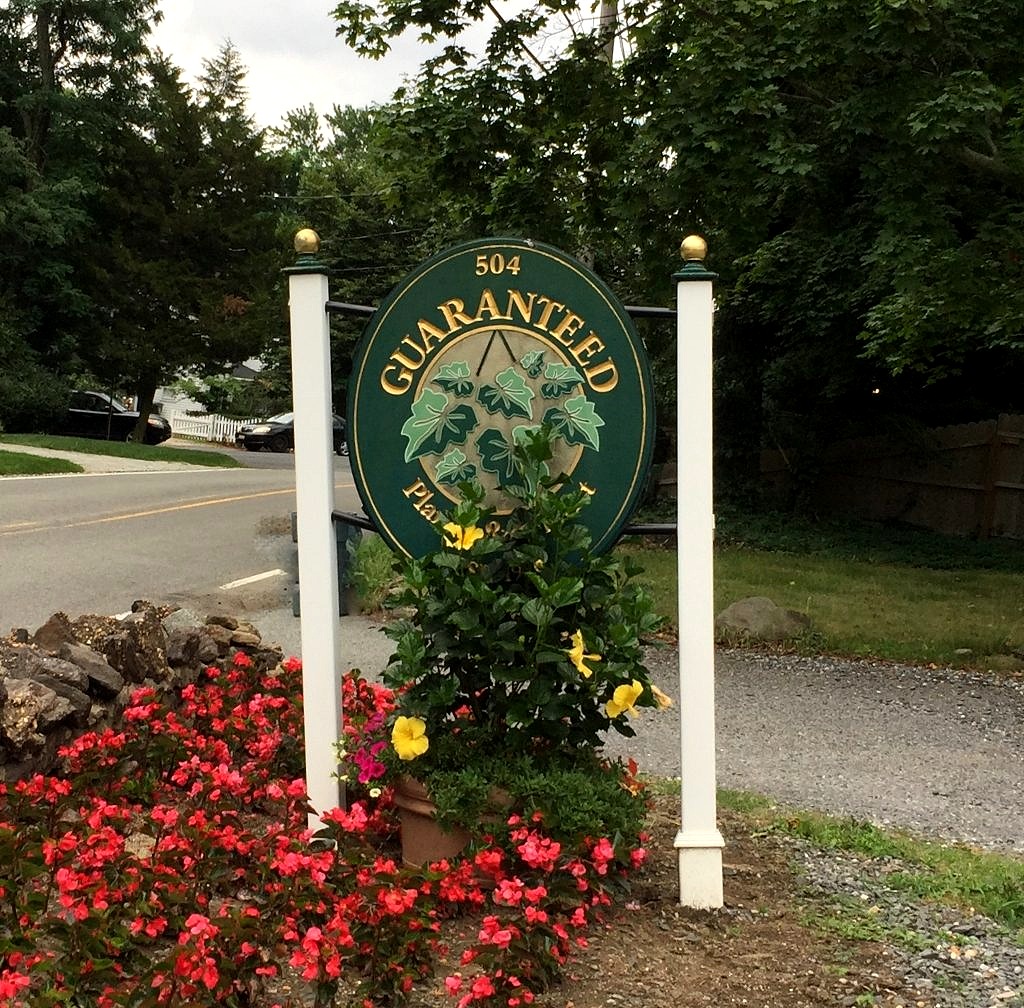 Their experienced floral designers always make sure we have gorgeous flower arrangements on all the tables (we always do a sit-down dinner). And they also schlep over these huge palms that we use to decorate the inside of the tent.
Their experienced floral designers always make sure we have gorgeous flower arrangements on all the tables (we always do a sit-down dinner). And they also schlep over these huge palms that we use to decorate the inside of the tent.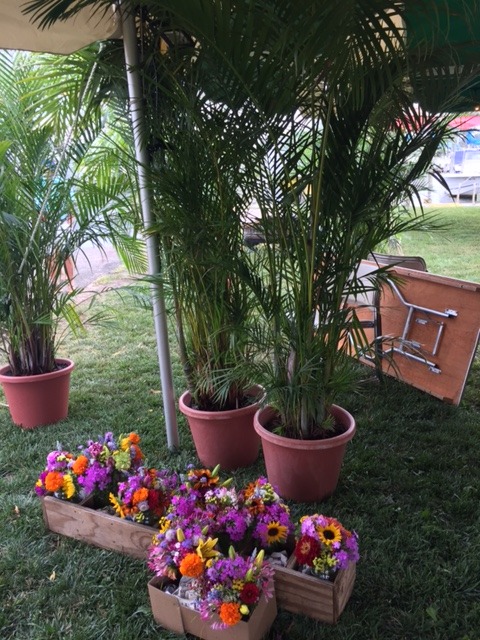 Somehow it all comes together. It doesn’t hurt that one of the owners of the fabulous
Somehow it all comes together. It doesn’t hurt that one of the owners of the fabulous 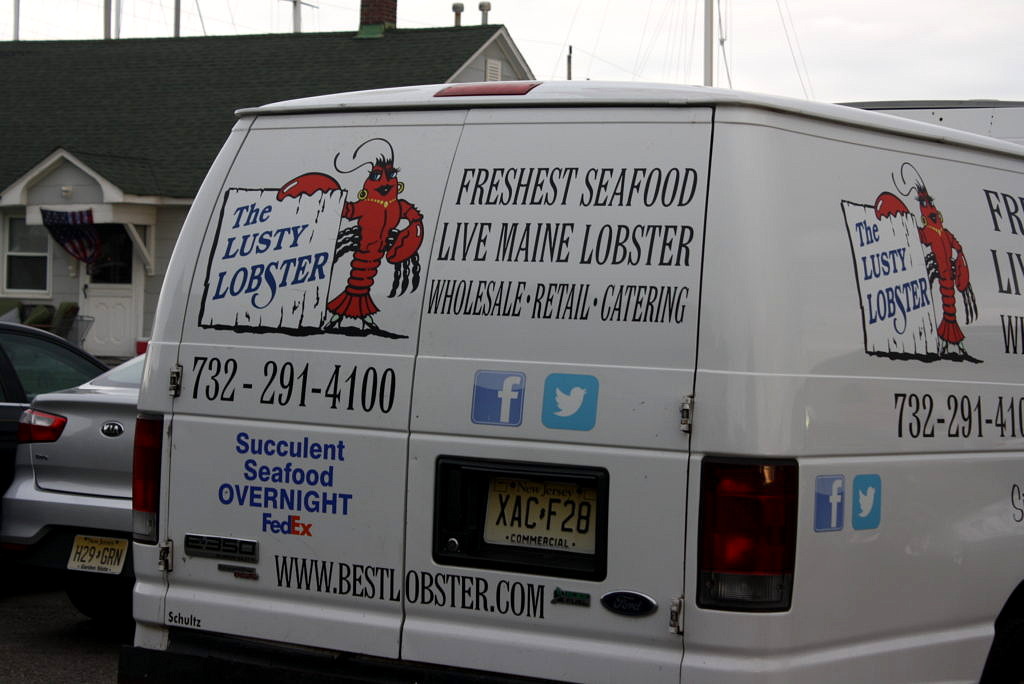
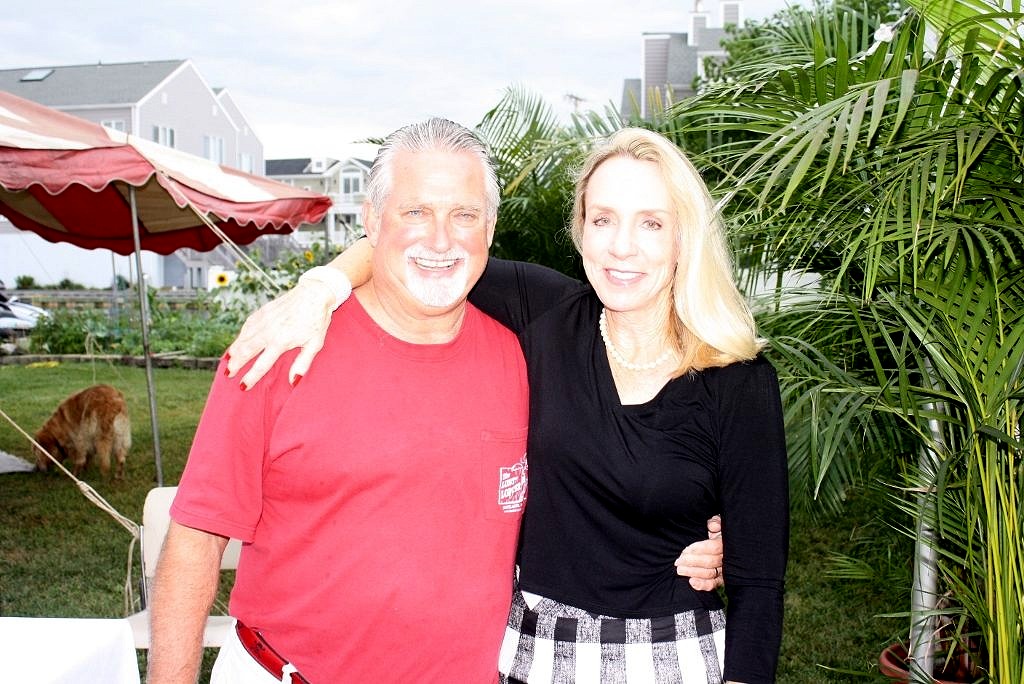 This year he served a grilled salmon that belied any thought of the Salmon Fatigue Syndrome I have been suffering lately.
This year he served a grilled salmon that belied any thought of the Salmon Fatigue Syndrome I have been suffering lately.


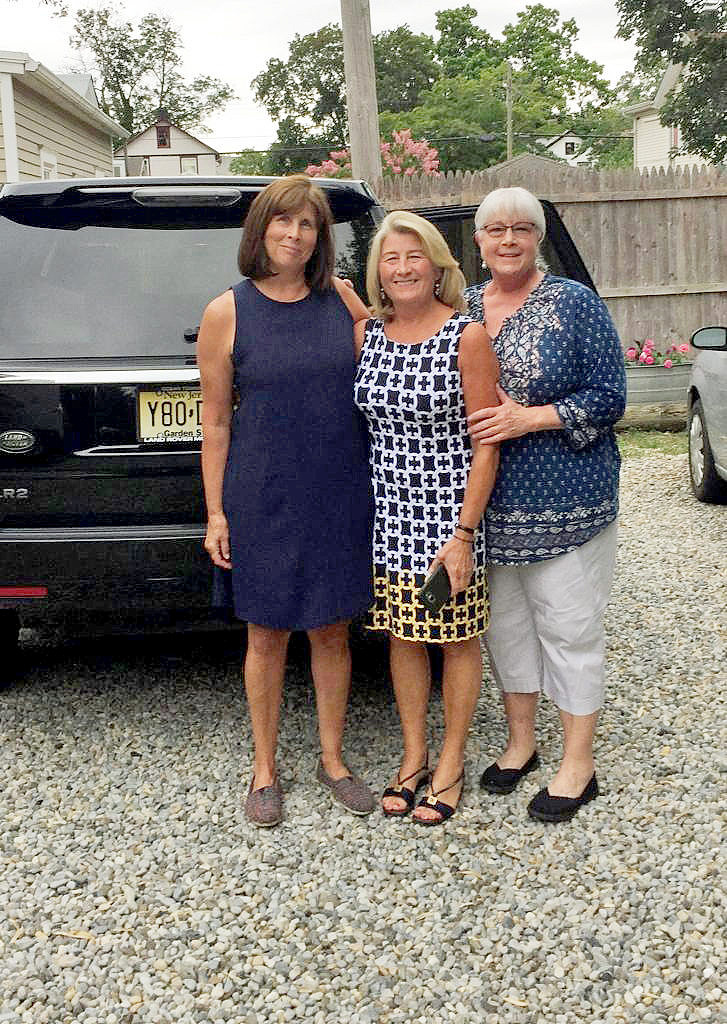
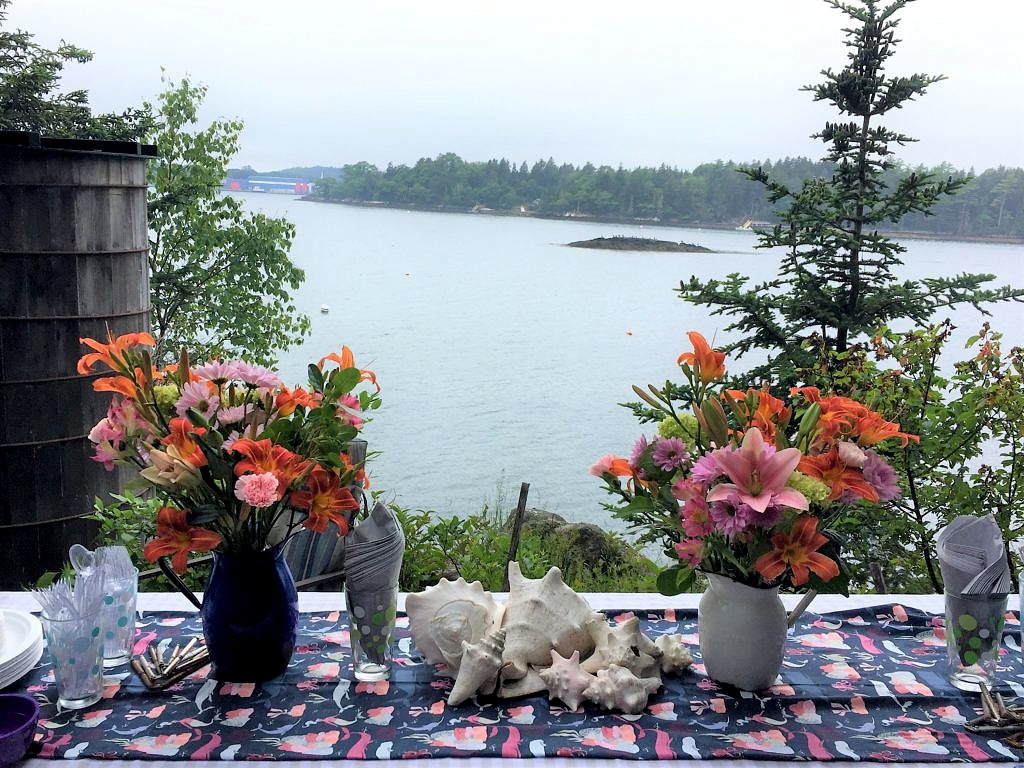 Part of the fun of having a cottage on the Maine coast is connecting with my sister and her family. She married a Mainer 30 years ago and has happily lived on the Pemaquid Peninsula–a bucolic landmass encircled by craggy clumps of rock and endless sea–ever since.
Part of the fun of having a cottage on the Maine coast is connecting with my sister and her family. She married a Mainer 30 years ago and has happily lived on the Pemaquid Peninsula–a bucolic landmass encircled by craggy clumps of rock and endless sea–ever since.
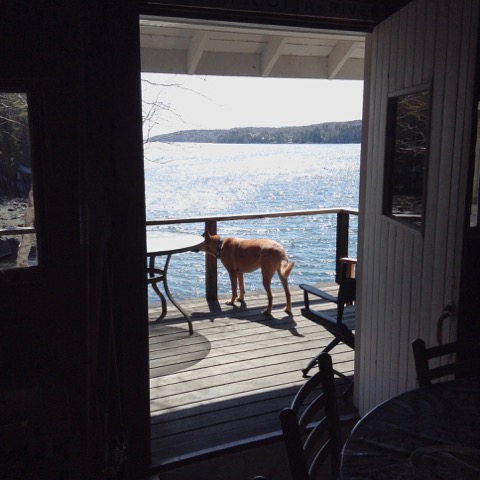
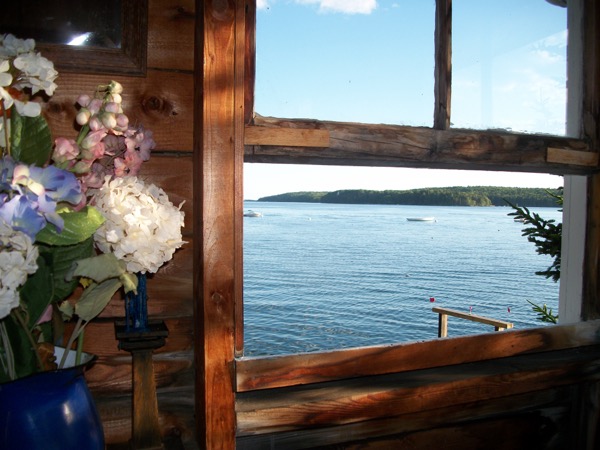
 In the bedrooms there are patchwork quilts and lace curtains to soften all that knotty pine. The daybeds are just perfect for curling up for a nap or reading on a rainy day. And finally, when darkness falls, it is lovely to open the curtains and lie back and watch the stars glimmer while drifting off to sleep.
In the bedrooms there are patchwork quilts and lace curtains to soften all that knotty pine. The daybeds are just perfect for curling up for a nap or reading on a rainy day. And finally, when darkness falls, it is lovely to open the curtains and lie back and watch the stars glimmer while drifting off to sleep.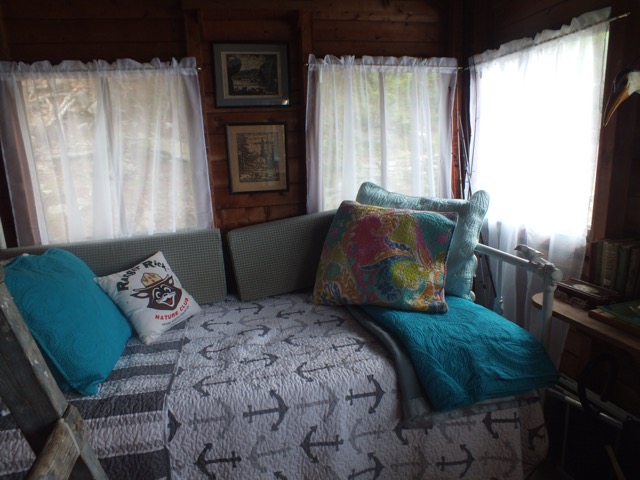
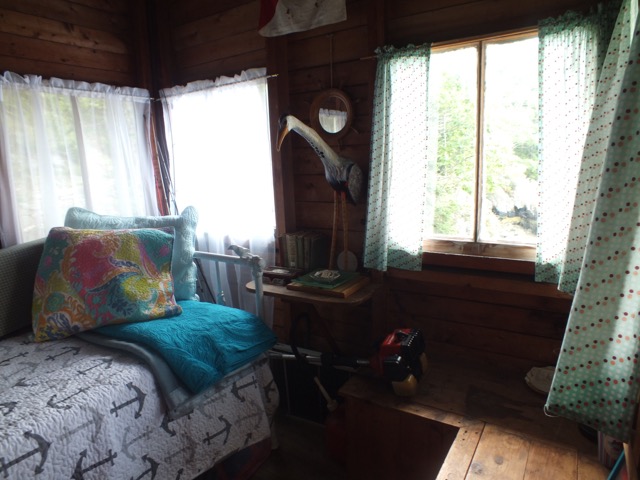
 Minimalism is not Laurie’s thing and collections abound; from bottles to mermaids, there is something fun to see everywhere you look.
Minimalism is not Laurie’s thing and collections abound; from bottles to mermaids, there is something fun to see everywhere you look.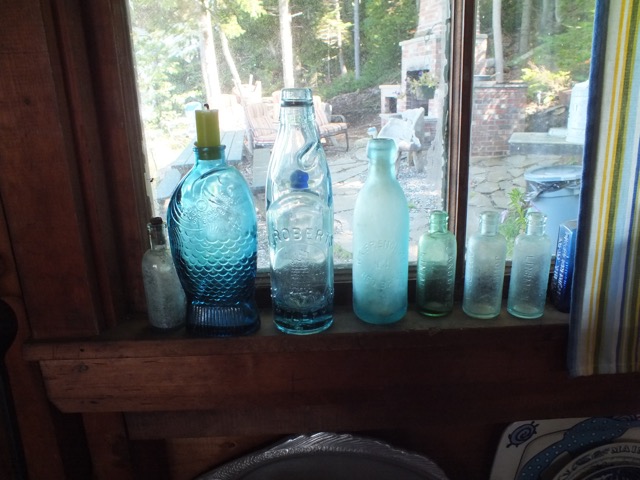
 But I digress. Because on this day we were not here to admire the view, or the eclectic interior, even better–we were here for a Lobster Bake!
But I digress. Because on this day we were not here to admire the view, or the eclectic interior, even better–we were here for a Lobster Bake! Once a summer they host a Lobster Bake and luckily we were on board for this one. Trust me, this is not for the faint of heart. The menu included 48 lobsters, 20 pounds of steamers, 36 ears of corn, 10 pounds of potatoes and 24 eggs! And let’s not forget to mention the hot dogs and hamburgers, steak tips, appetizers and blueberry buckle–there was, no doubt, enough food to sink a battleship!
Once a summer they host a Lobster Bake and luckily we were on board for this one. Trust me, this is not for the faint of heart. The menu included 48 lobsters, 20 pounds of steamers, 36 ears of corn, 10 pounds of potatoes and 24 eggs! And let’s not forget to mention the hot dogs and hamburgers, steak tips, appetizers and blueberry buckle–there was, no doubt, enough food to sink a battleship!

 A fair amount of heavy lifting is required so it helps if a few strong men are part of the program. First a fire is started:
A fair amount of heavy lifting is required so it helps if a few strong men are part of the program. First a fire is started: Then the children gather seaweed to line the bottom of metal troughs. Next comes the lobsters.
Then the children gather seaweed to line the bottom of metal troughs. Next comes the lobsters.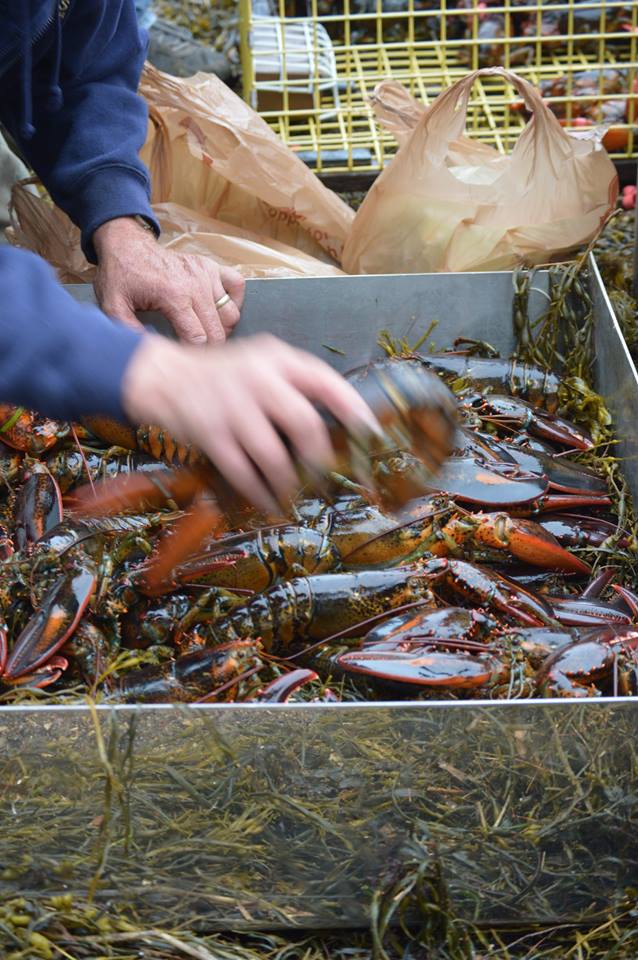 Then potatoes and onions wrapped in foil, and partially shucked ears of corn are added. (There I am in a key supervisory role on the right).
Then potatoes and onions wrapped in foil, and partially shucked ears of corn are added. (There I am in a key supervisory role on the right).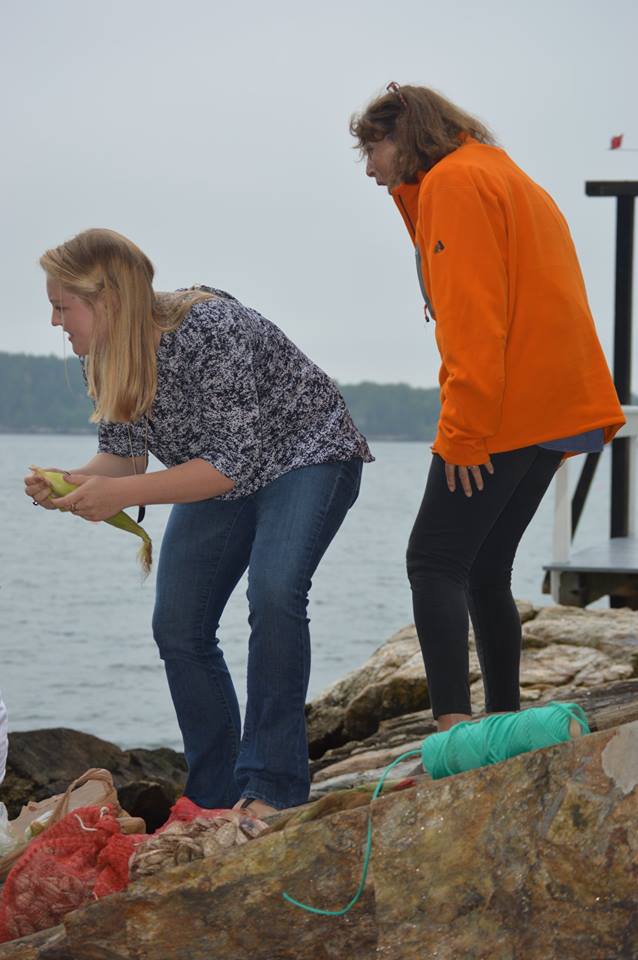 Top with bags of steamers, and a couple of dozen eggs in the carton.
Top with bags of steamers, and a couple of dozen eggs in the carton.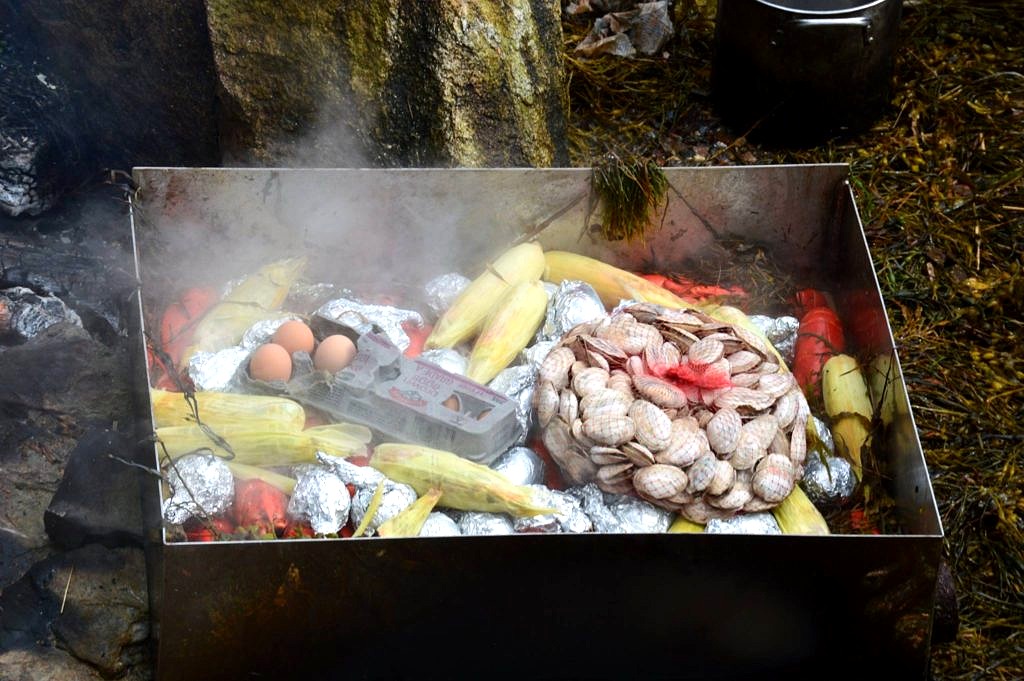 Add the seaweed and lug on top the fire.
Add the seaweed and lug on top the fire. Toss in a few buckets of sea water and 45 minutes later it’s all done.
Toss in a few buckets of sea water and 45 minutes later it’s all done.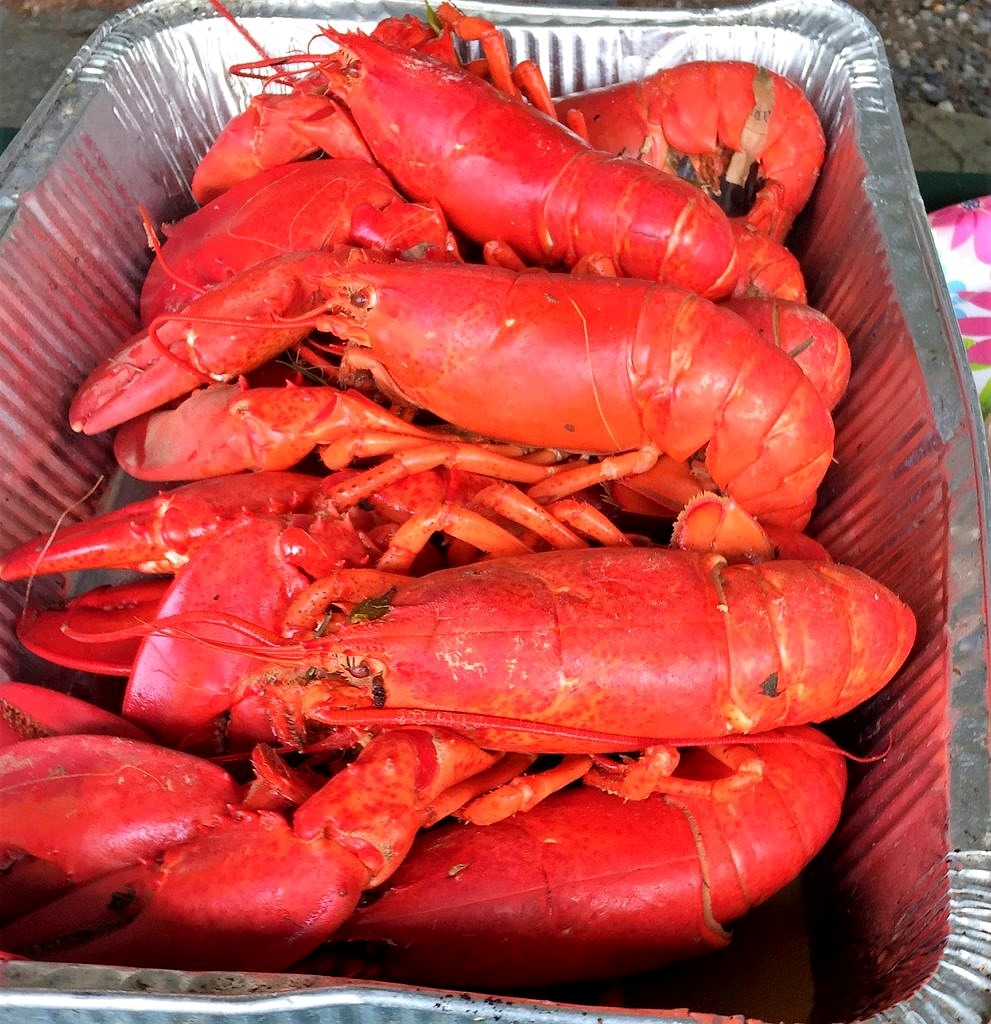
 Here is just part of the crew on hand that perfect Maine summer day. From 86 to almost two years old a great time was had by all. Even young Oscar here, who clearly did not appreciate his seaweed chapeau…
Here is just part of the crew on hand that perfect Maine summer day. From 86 to almost two years old a great time was had by all. Even young Oscar here, who clearly did not appreciate his seaweed chapeau… brightened up after an afternoon nap in the arms of his good friend, Laurie.
brightened up after an afternoon nap in the arms of his good friend, Laurie.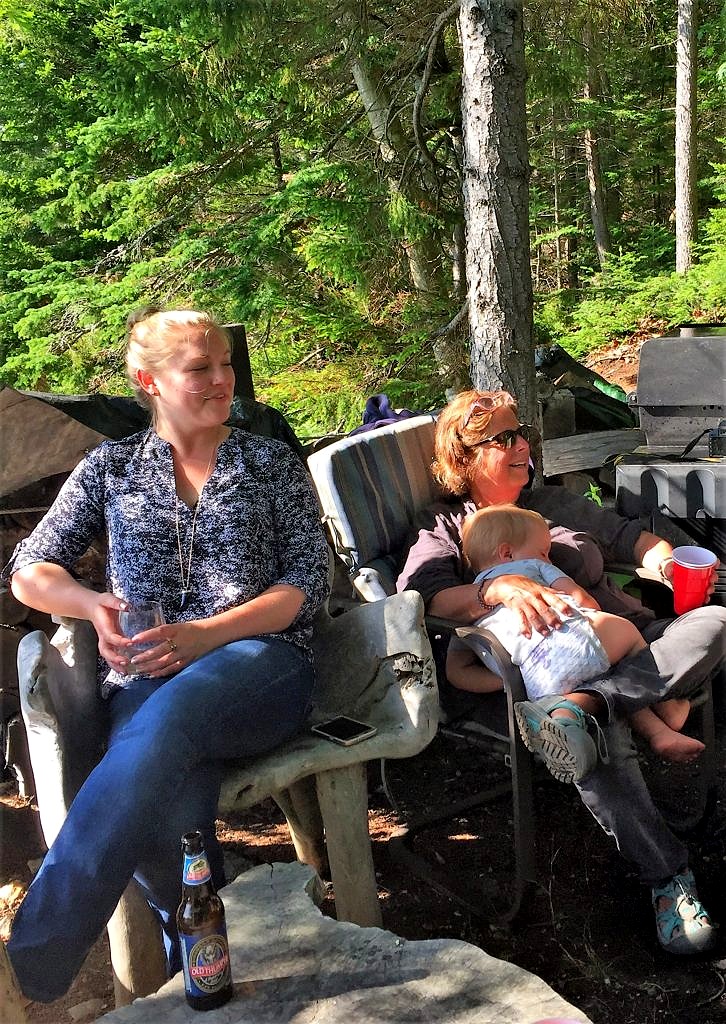

 When a customer from North Jersey called last week to check on the status of her classic farm table from our factory in Hungary–meant to arrive in May but now coming in June, sadly–she told us the same table she was waiting for was featured in a Rumson home in this month’s HGTV Magazine!
When a customer from North Jersey called last week to check on the status of her classic farm table from our factory in Hungary–meant to arrive in May but now coming in June, sadly–she told us the same table she was waiting for was featured in a Rumson home in this month’s HGTV Magazine!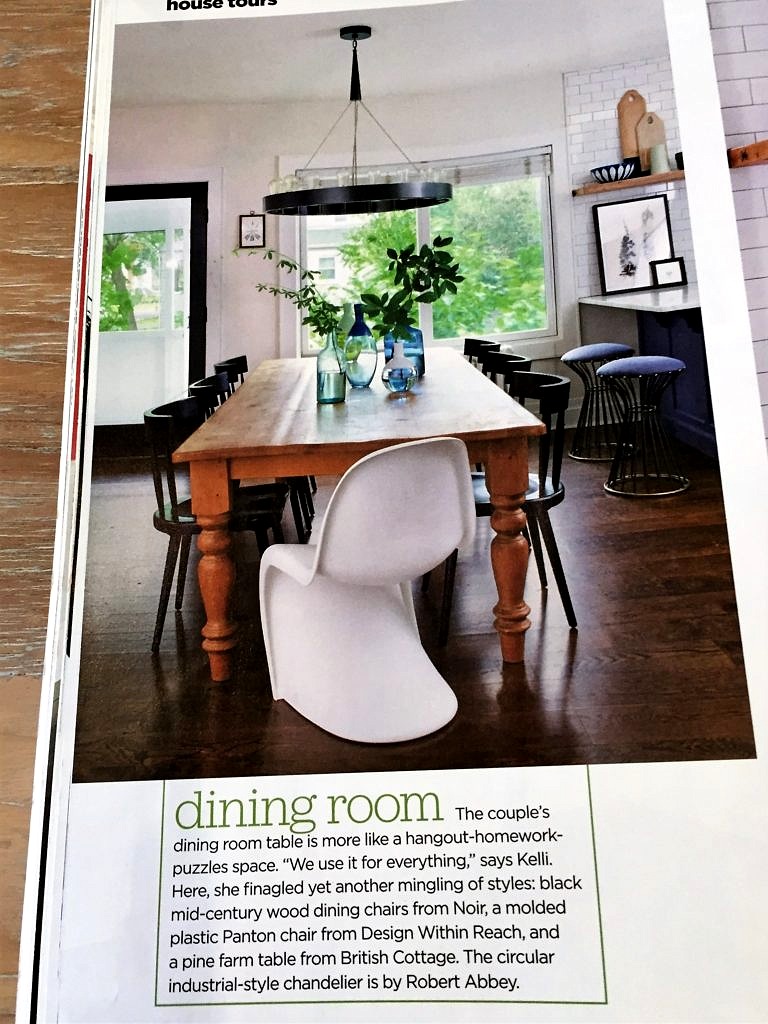 And sure enough, there was our British Cottage table! But it didn’t start out with this Rumson family. About 15 years ago a couple from Spring Lake had had it with the traditional layout of their perfectly located home. He cooked, she loved to entertain, the sequestered formal dining room and barely adequate kitchen were not working for their lifestyle. So they blew out the back of the house, and the wall separating the dining room and the kitchen and made a fabulous room overlooking their fabulous garden. They added new cabinets and state of the art appliances then anchored the whole shebang with a custom British Cottage farm table.
And sure enough, there was our British Cottage table! But it didn’t start out with this Rumson family. About 15 years ago a couple from Spring Lake had had it with the traditional layout of their perfectly located home. He cooked, she loved to entertain, the sequestered formal dining room and barely adequate kitchen were not working for their lifestyle. So they blew out the back of the house, and the wall separating the dining room and the kitchen and made a fabulous room overlooking their fabulous garden. They added new cabinets and state of the art appliances then anchored the whole shebang with a custom British Cottage farm table.


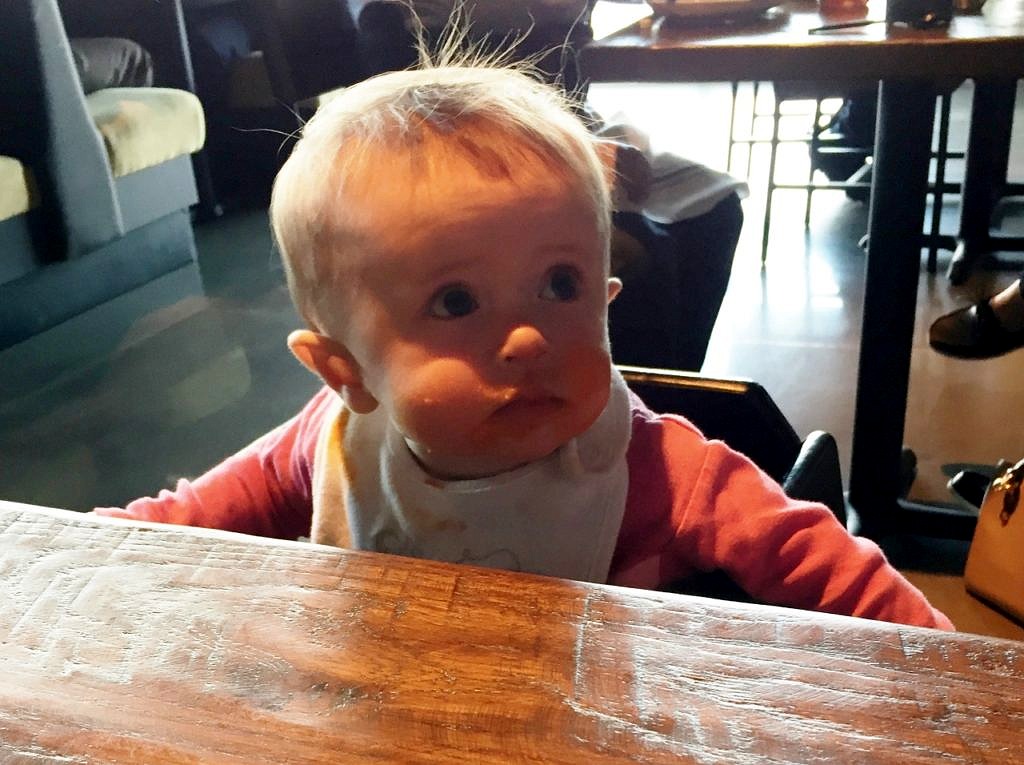 Basically, we have been on the road all spring, finding inspiration and beauty everywhere we go. Nothing, however, tops young Charlotte here. Our newest grandchild, and look, at just seven months, already a lady who does lunch!
Basically, we have been on the road all spring, finding inspiration and beauty everywhere we go. Nothing, however, tops young Charlotte here. Our newest grandchild, and look, at just seven months, already a lady who does lunch! We started out in April in North Carolina at the
We started out in April in North Carolina at the 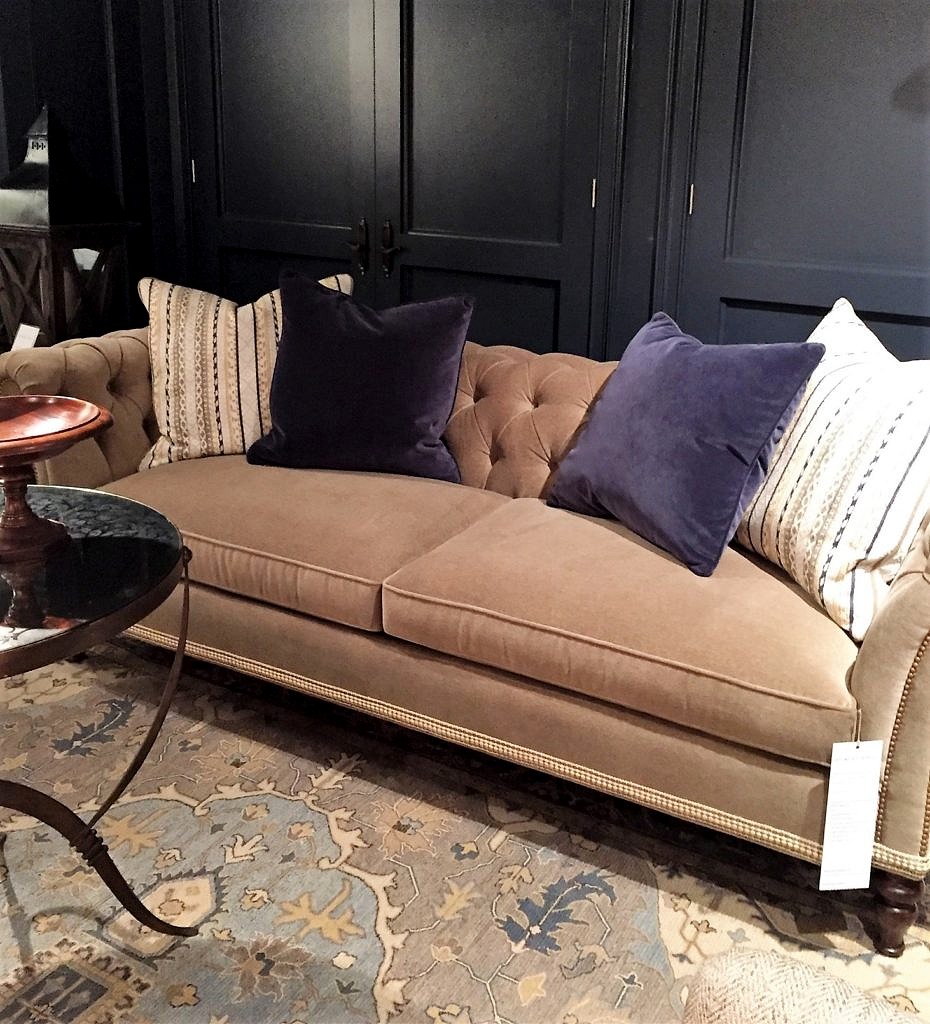 We did not buy the rug (only because it was not for sale), but we did buy this fabulous ecru velvet Chesterfield sofa along with the two coordinating armchairs. Classic, elegant, vintage, but with a smattering of modernity, that is our British Cottage story.
We did not buy the rug (only because it was not for sale), but we did buy this fabulous ecru velvet Chesterfield sofa along with the two coordinating armchairs. Classic, elegant, vintage, but with a smattering of modernity, that is our British Cottage story.
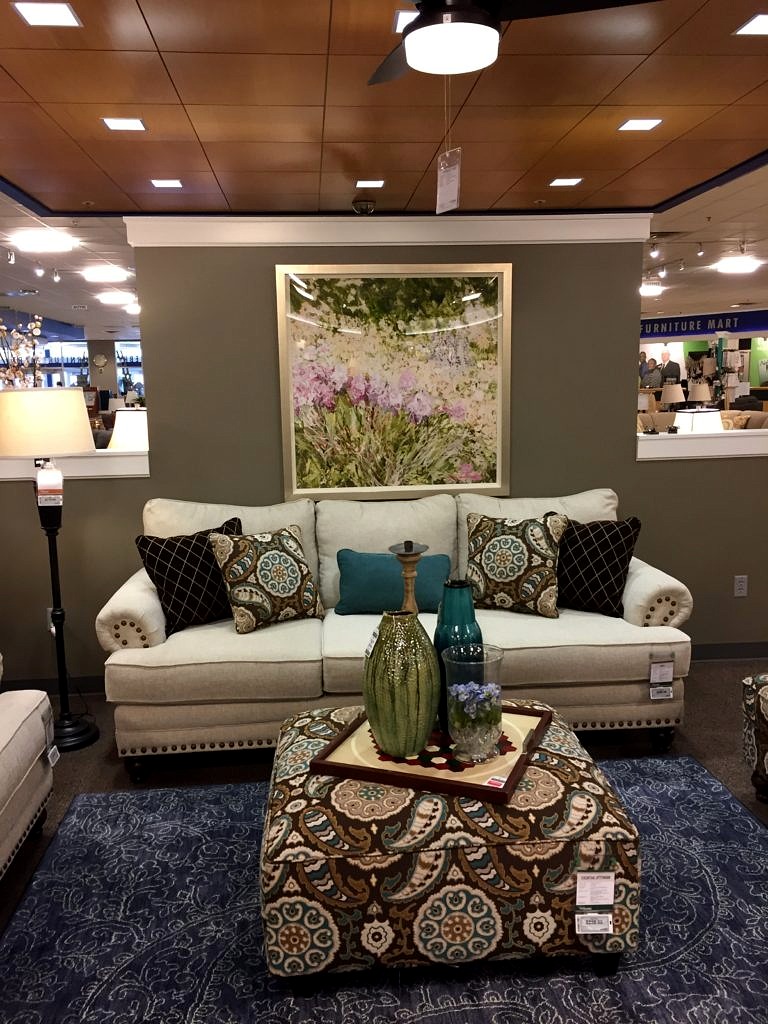 Looking at this vignette, you have to wonder; is this really the best a billion dollar company can do? Crank it up. Go get those Fiezy rugs and a coffee table that doesn’t clash with everything. While you’re at it, rethink your artwork. And accessories. Come on Warren, it’s definitely time to up your game; hire some new buyers, and show Nebraska some style.
Looking at this vignette, you have to wonder; is this really the best a billion dollar company can do? Crank it up. Go get those Fiezy rugs and a coffee table that doesn’t clash with everything. While you’re at it, rethink your artwork. And accessories. Come on Warren, it’s definitely time to up your game; hire some new buyers, and show Nebraska some style. It was architecturally awesome; I loved the polished concrete floors, the M.C. Esher-esque seemingly never-ending series of arched doorways, symmetrical room settings, and the high-reaching ceilings. Sadly the products were every bit as lacking, in their own way, as the items at Warren’s Nebraska Furniture Mart. Not that they were ugly or poorly designed but, after you’ve seen one crystal chandelier, one upholstered linen chair, and one low-slung couch, there’s fifty more to look at. Enough already!
It was architecturally awesome; I loved the polished concrete floors, the M.C. Esher-esque seemingly never-ending series of arched doorways, symmetrical room settings, and the high-reaching ceilings. Sadly the products were every bit as lacking, in their own way, as the items at Warren’s Nebraska Furniture Mart. Not that they were ugly or poorly designed but, after you’ve seen one crystal chandelier, one upholstered linen chair, and one low-slung couch, there’s fifty more to look at. Enough already! But we had other fish to fry:
But we had other fish to fry:

 Nordstrom’s to shop:
Nordstrom’s to shop: And Farmer’s Markets to frequent.
And Farmer’s Markets to frequent. 